The Hisense U8Q is a television that makes it hard not to feel that the manufacturer approached the topic with the ambition of a top student. The picture is strong, vibrant and contrasting – as if it were shouting: “look, I can do more than most in this price range!” And indeed, there is some truth to this. The secret lies in the large number of dimming zones in Mini-LED technology. Thanks to this, HDR does not just come down to promises in the brochure, but can actually impress – especially during evening viewings. It's also hard to complain about motion fluidity. Watching matches and fast-paced games is enjoyable, and although the ball may sometimes leave a slight trace, for 99% of viewers this will be a detail of little importance in everyday watching. Gamers also have reasons to be pleased here – although it's worth mentioning the lack of HGiG functionality right away. Aside from that, however, it is really good: low input lag, three HDMI 2.1 ports and a full set of gaming features make the U8Q one of the more interesting Mini-LEDs for console fans. Of course, there are no perfect products. The television still carries some “mini-LED” remnants, and the Vidaa system – although full of features – can be less intuitive and has a more modest selection of apps than competing platforms. But are these serious drawbacks or rather minor jabs in the context of the price and what we actually get? We leave the answer to that question to you!
- Matching (Score)
- Our verdict
- TV appearance
- Where to buy
- Contrast and black detail
- HDR effect quality
- Factory color reproduction
- Color reproduction after calibration
- Smoothness of tonal transitions
- Image scaling and smoothness of tonal transitions
- Blur and motion smoothness
- Console compatibility and gaming features
- Input lag
- Compatibility with PC
- Viewing angles
- TV efficiency during daytime
- Details about the matrix
- TV features
- Apps
- Playing files from USB
- Sound
Hisense U8Q vs LG QNED86A / QNED85A / QNED87A
Direct compare
U8Q
QNED85A / QNED86A / QNED87A / A6A / A6B / A6C
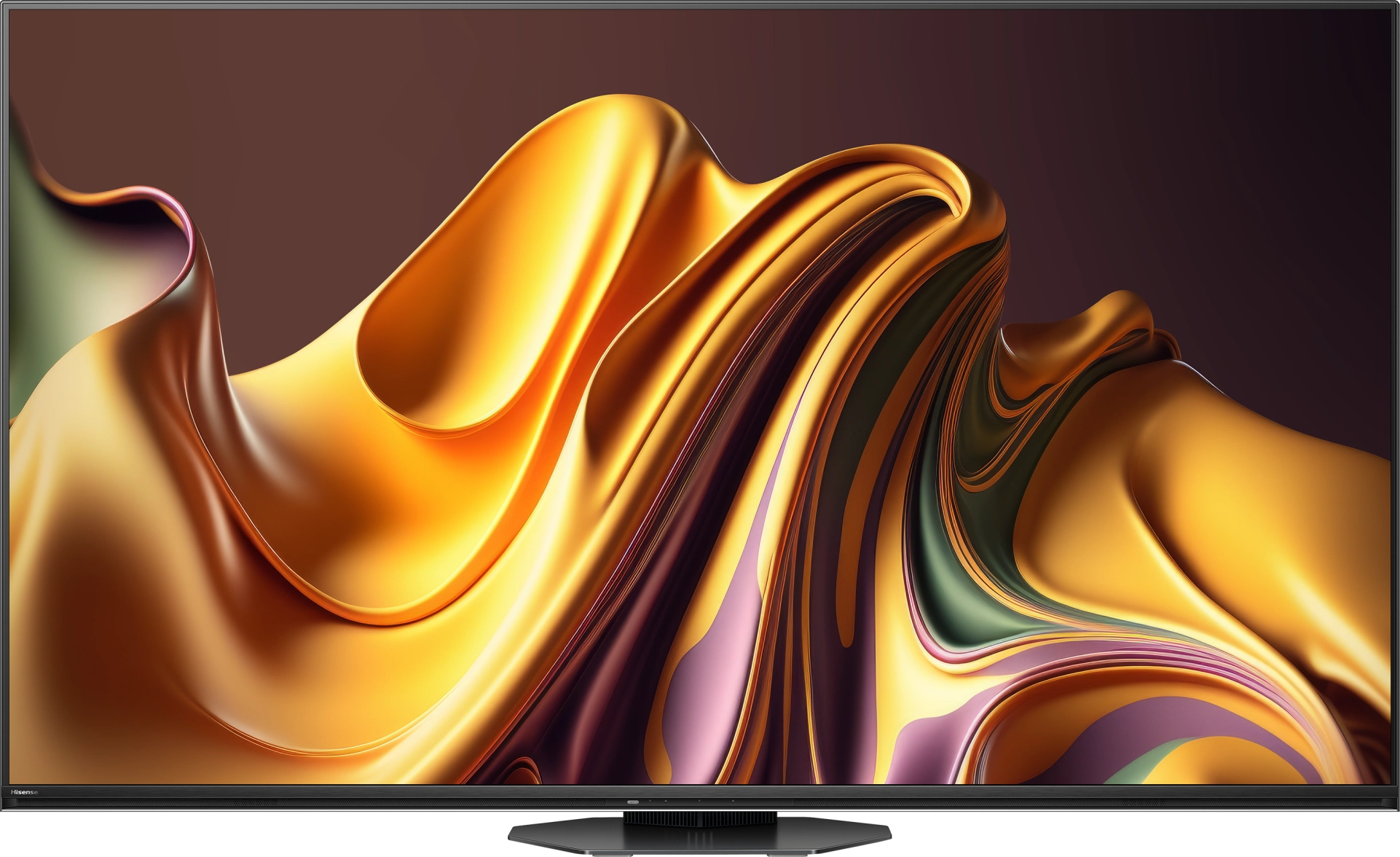

Panel type: LCD VA
Resolution: 3840x2160
System: VIDAA
Model year: 2025
Complete the survey to find out the result

Panel type: LCD IPS
Resolution: 3840x2160
System: WebOS
Model year: 2025
Complete the survey to find out the result

Overall rating
8.0
7.0
Movies and series in UHD quality
7.8
6.4
Classic TV, YouTube
7.6
6.2
Sports broadcasts (TV and apps)
7.2
7.2
Gaming on console
8.6
8.4
TV as a computer monitor
8.4
8.0
Watching in bright light
8.2
5.8
Utility functions
9.4
8.4
Apps
7.7
9.1
Sound quality
7.8
6.0
Complete the survey to find out what fits your preferences
Advantages
Great blacks and contrast
Incredibly high brightness
Full HDR format package: HDR10, HDR10+, Dolby Vision
Good motion fluidity - 165Hz panel
Outstanding usability in difficult lighting conditions (High brightness + New anti-reflective coating on the panel)
Many features for gamers, VRR, ALLM, HDMI 2.1, 288Hz for PC
All 3 ports in HDMI 2.1 standard (Finally!)
USB-C with video signal sending capability (Displayport)
Many features in the Vidaa system
Support for DTS and Dolby Atmos
120 Hz panel, good for sports and gaming
Very low input lag
Great for gamers (VRR, ALLM, HGiG etc.)
Complete set of HDMI 2.1 ports
Good compatibility with PC (excellent font readability)
Bright picture (around 700 nits in HDR), performs well in moderately bright rooms
Good viewing angles (IPS)
Support for Dolby Vision
User-friendly webOS operating system with Magic Remote and voice assistant
Ability to record programmes to USB
Disadvantages
Missing some applications in the Vidaa operating system
At maximum volume, the television shakes slightly
The television tends to "overexpose" the image in 4K HDR materials.
Very poor black levels and contrast due to the IPS panel
Lack of the advertised 144 Hz in PC mode
Aggressive "light bands" when local dimming is enabled (edge local dimming ruins evening movie sessions)
Confusion in model designations and versions – even televisions with the same name in different stores can have different stands (central or two feet) or frame colours, which can be very misleading when purchasing.
Our verdict
QNED86A6A is a television that truly does an excellent job in its price range when it comes to sports, gaming, and everyday TV viewing. The 120 Hz panel ensures smooth images and sharp motion, which both sports fans and gamers will appreciate. It also features low input lag along with a complete set of gaming functions such as HGiG, VRR, and ALLM. The television works just as well with a computer as it does with a console, so whether in the office or on a desk in the 43” version, it serves excellently as a work monitor. Another strong point is the webOS system. This is a fast, stable, and application-rich operating system that, paired with the Magic remote, offers very convenient operation. The new version of the remote is slimmer and fits better in the hand, while the on-screen cursor is a solution that many competitors lack. Additionally, there are classic features – USB recording, Bluetooth for headphones, and a full HDMI 2.1 set with eARC and Dolby Atmos support. This makes the televisions from the QNED85 series some of the most "multimedia" televisions in their class. However, there’s no point in mincing words; this model also has its significant flaws. Its biggest flaw is undoubtedly the contrast, or rather, the lack thereof. The IPS panel combined with edge-lit "mini-LED" is simply a very bad idea. The screen is just not suitable for watching movies in a dark living room. The blacks are bluish-grey, and local dimming can generate light strips reminiscent of lasers, which effectively spoil the desire to watch. This is not a choice that can be wholeheartedly recommended for home cinema. The second problem may not be directly related to the television itself but rather to its sales. It concerns the chaos in naming and discrepancies in derivative versions. The same model, even with the same marking, can have a different bezel colour or stand depending on the store. This can truly be frustrating for the buyer and evoke a sense of confusion. To summarise briefly: LG QNED86A6A is a great television for sports, gaming, and everyday television, with a user-friendly system and substantial functionality. But if you are looking for a screen strictly for movies or series and require deep blacks, it would be better to look towards televisions that can truly be called Mini-LEDs with full confidence.
TV appearance
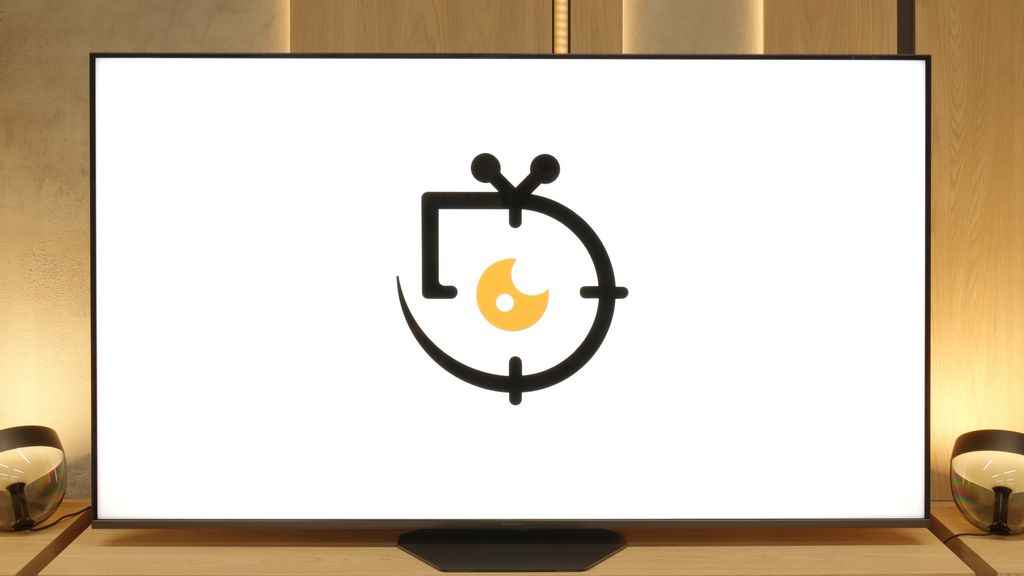
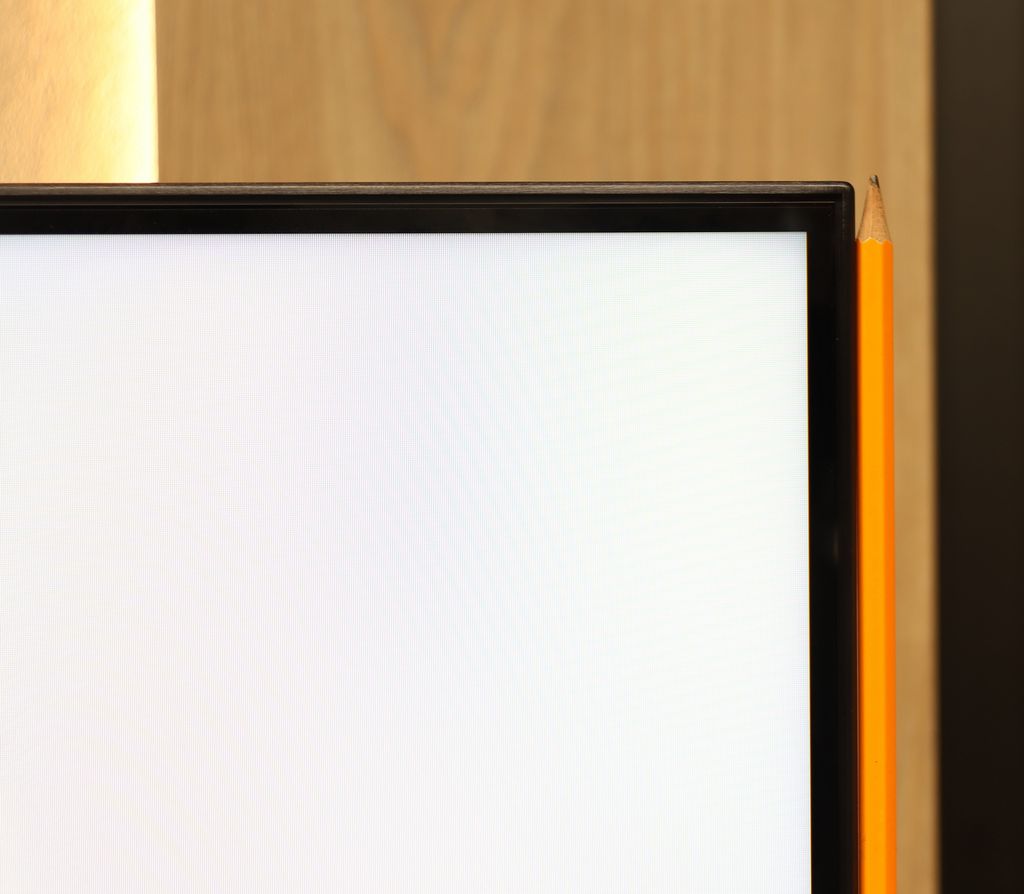
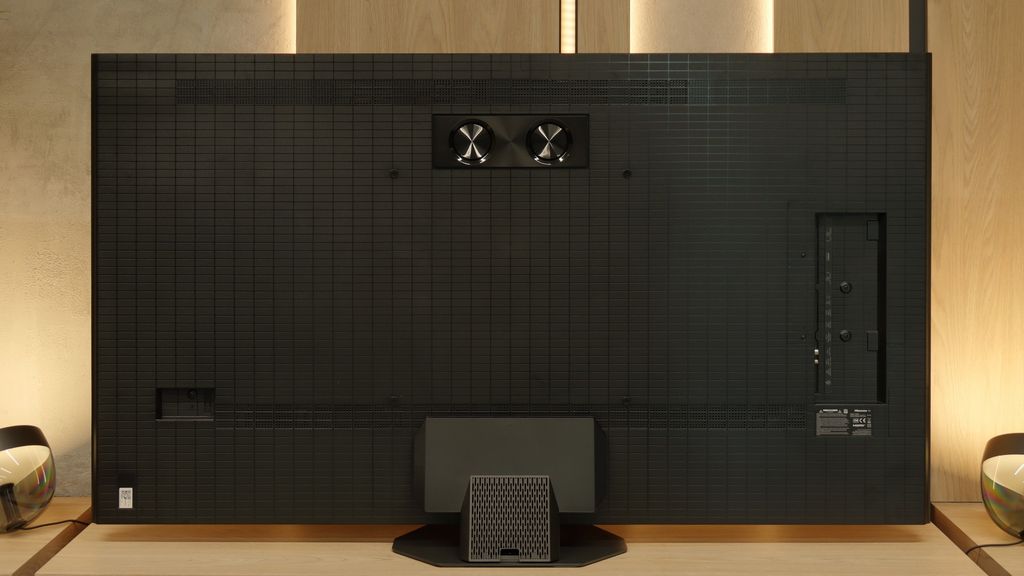
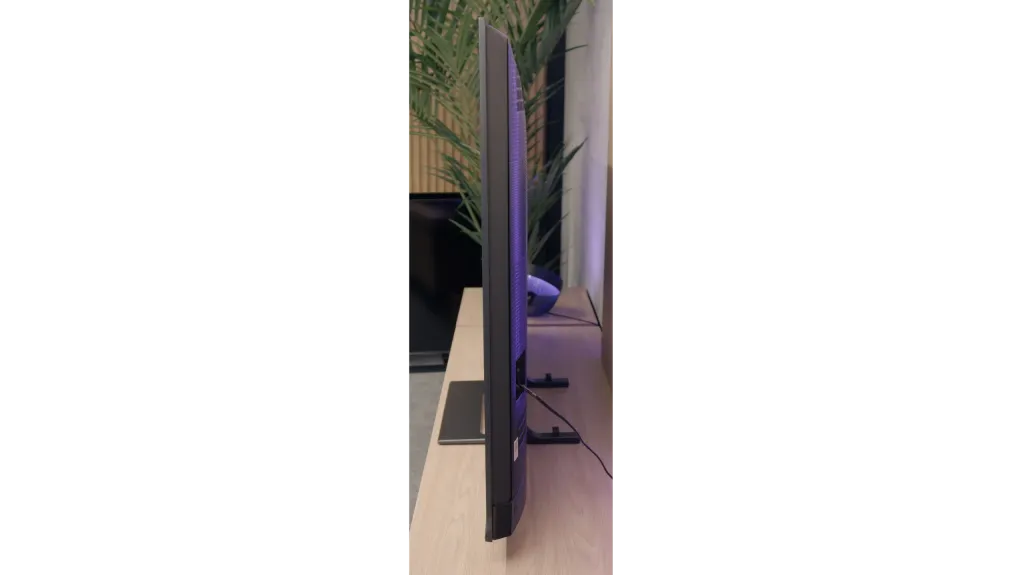



Contrast and black detail
8.6/10
3.7/10
Local dimming function: Yes, number of zones: 2048 (32 x 64)
Local dimming function: Yes, number of zones: 6 (1 x 6)
Contrast:

Result
1,024,000:1

Result
140,000:1

Result
35,000:1

Result
22,350:1

Result
22,300:1

Result
4,050:1

Result
1,750:1

Result
4,800:1

Result
1,850:1

Result
1,350:1
Halo effect and black detail visibility:
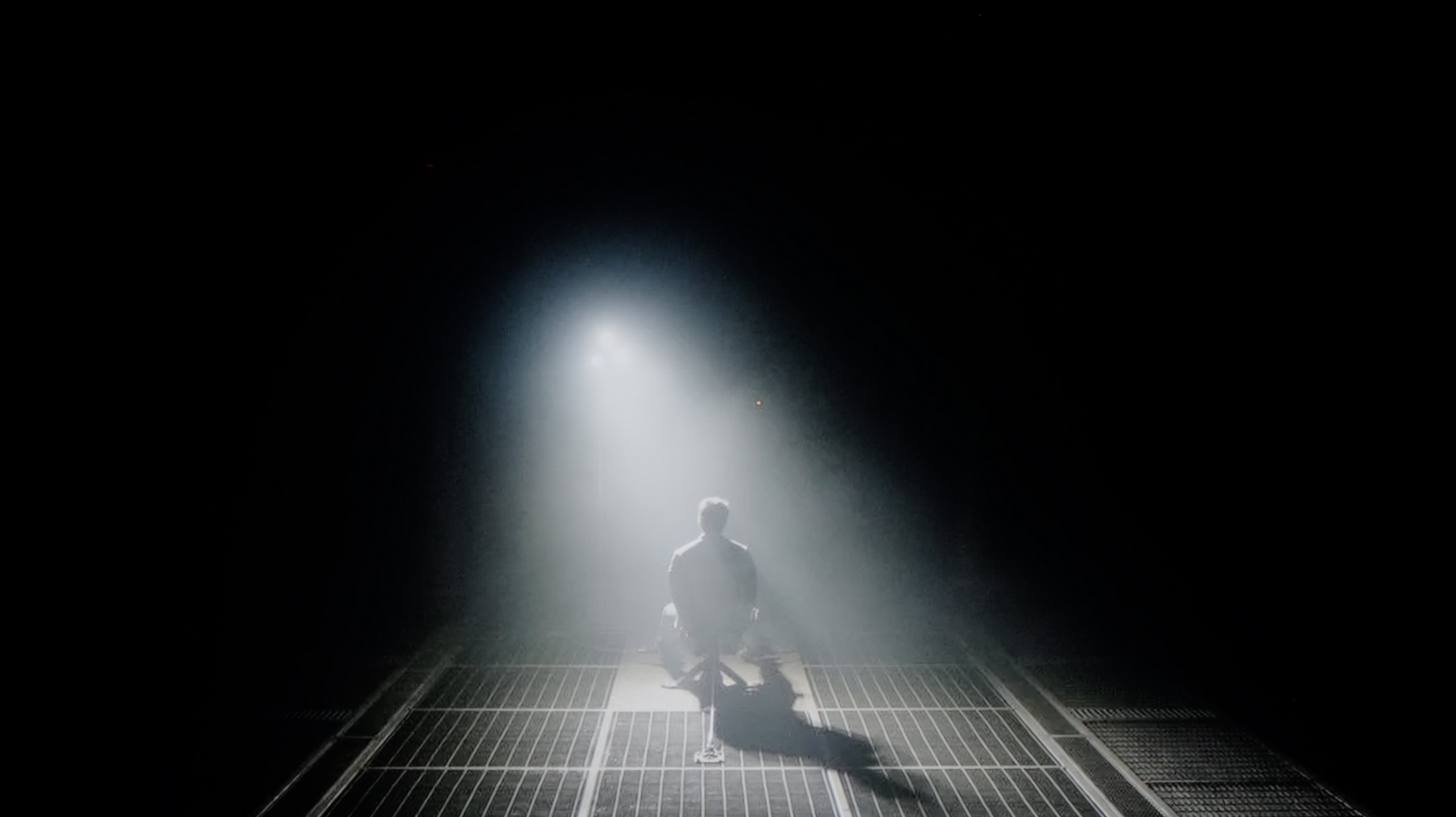

The unit of Hisense U8Q that we tested, measuring 65 inches, is equipped with a VA panel, which in itself offers high native contrast. However, this is not the greatest strength of this model – the key lies in the Mini LED backlighting. Thanks to the use of thousands of dimming zones and a well-developed light management algorithm, the contrast in the U8Q can be described as excellent, especially for a TV of this technology.
The best results reach a level of around one million to one – a result that commands respect and places the U8Q among the top Mini LED televisions. Indeed, there are certain hiccups and even drops in contrast, but they are not as dramatic as in many other models of this class that we have tested on our portal. It should also be noted that like every Mini LED television, the U8Q is not entirely free from typical imperfections – sometimes the image may be dimmed too much or slight blooming with a halo effect may appear. However, this does not change the overall impression: the contrast in the Hisense U8Q is stunning and constitutes one of the greatest assets of this model.
Although the manufacturer describes the QNED86A as a Mini-LED television, there is no multi-zone local dimming system here like those found in more expensive models. In practice, we are dealing with traditional edge lighting, which only allows for dimming horizontal bands of the screen from top to bottom. Combined with a low-contrast IPS/ADS panel, the effect simply falls short. If we decide to leave local dimming on, a problem arises – the television can illuminate selected portions in such a way that it looks like "flying lasers" cutting across the screen. This is very distracting, and it is difficult to speak of truly cinematic experiences under such conditions. Therefore, in our opinion, it is better to turn this feature off. However, one must reckon with the fact that the contrast then drops to around 1500:1, but at least the picture does not irritate with artificial flashes.
HDR effect quality
7.6/10
6/10
Luminance measurements in HDR:

Result
2195 nit

Result
725 nit

Result
1652 nit

Result
485 nit

Result
1541 nit

Result
602 nit

Result
524 nit

Result
690 nit

Result
512 nit

Result
500 nit
Scene from the movie “Pan” (about 2800 nits)


Scene from the movie “Billy Lynn” (about 1100 nits)
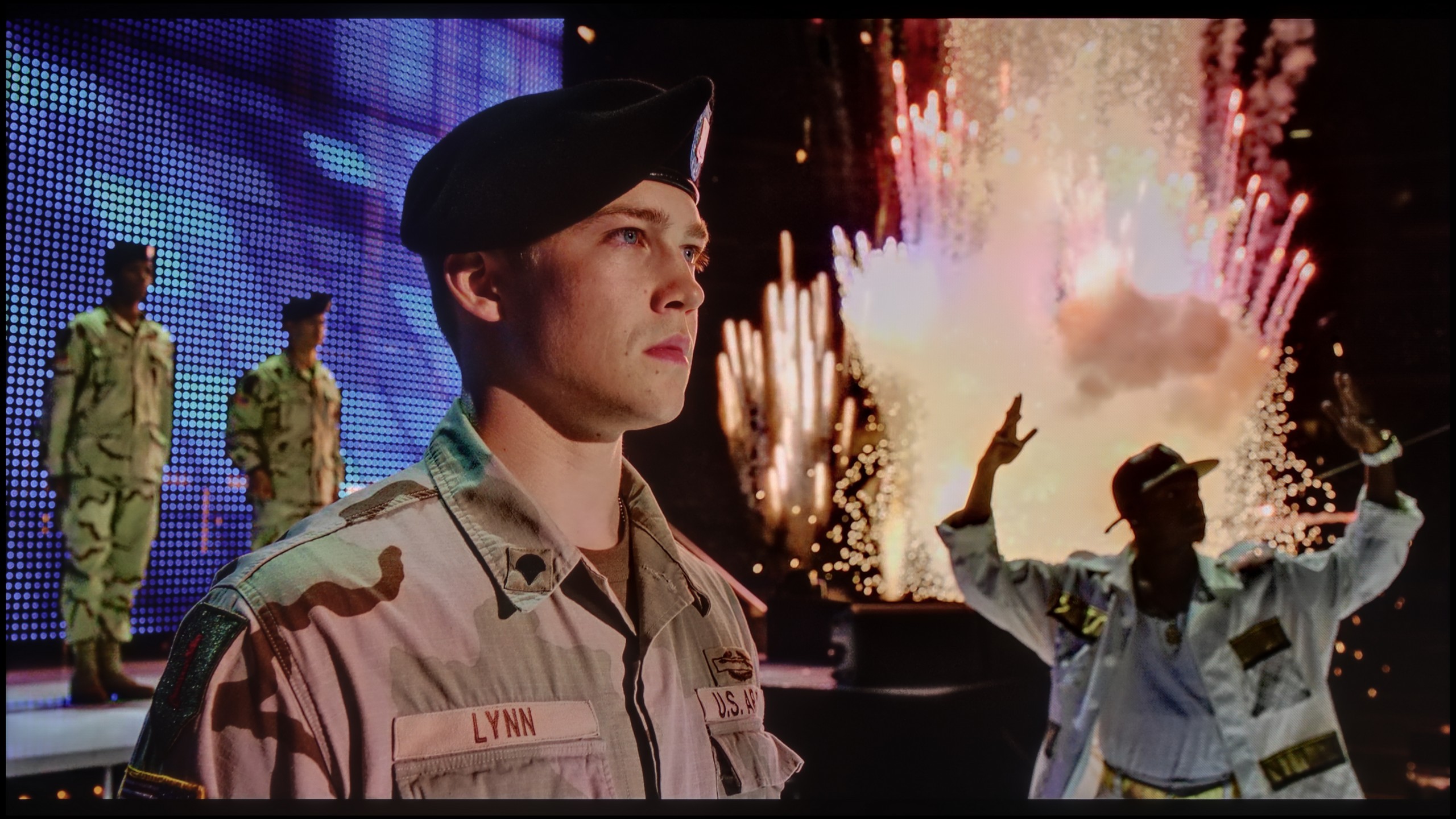

Static HDR10


Dynamic: Dolby Vision
Dynamic: Dolby Vision


HDR luminance chart:
LG QNED86A / QNED85A / QNED87A
HDR luminance
Hisense U8Q
HDR luminance
When it comes to HDR, the Hisense U8Q shows its claws. On paper, that is, in synthetic measurement tests, the television can achieve nearly 4000 nits of peak brightness. This is a value that most models can only envy. In practice, this translates to very strong light effects in films – in some scenes, we managed to measure a real brightness of between 1500 and 2000 nits, which is a level typically reserved for the absolute top tier of televisions on the market.
Of course, it's not always perfect. In small, pinpoint elements, brightness can drop – a good example is scene number 4 from the film Sicario 2, where instead of thousands of nits, we get around 500. But it’s worth noting that the effect does not disappear completely – the light is still visible, and the image does not seem artificially dimmed. This is a typical issue with Mini LEDs, so it's difficult to consider this a major downside.
On the other hand, the colour reproduction is a huge plus. Thanks to additional coatings that enhance colour saturation, the U8Q nearly covers the entire DCI-P3 colour space (98%), and for the wider BT.2020 range, it achieved over 80%. This is an excellent result that makes HDR films look rich, vivid, and simply very cinematic.
Against a backdrop of contrast and black, the brightness of the QNED86A and the overall HDR effect perform much better. This is a television that can achieve around 700 nits under the best conditions, so in terms of luminance alone, there is nothing to be ashamed of. As a result, scenes with strong lights, explosions, flashes, or bright parts of the landscape look clear and can make an impression. Interestingly, even in more challenging moments with small, contrasting elements on the screen, the television manages well with their backlighting, and the details are quite visible. The problem arises when there are many dark tones. The lack of effective local dimming causes the black to practically disappear, and instead, we get a grey haze spreading across the entire screen. This kills the sense of depth and makes the image look flat, as if it lacks a cinematic character. In bright animations or colourful family films, this will not be a problem, as vibrant colours and bright light dominate. But in horrors or productions set in darkness, these limitations are very strongly felt. As a comfort, it is worth adding that the QNED86A is actually a QLED television with a PFS LED filter, which gives it very good coverage of a wide colour gamut. Both the DCI-P3 palette and the broader BT.2020 perform really well here. This makes the colours in HDR films saturated, juicy, and with the appropriate depth – even if the black itself disappoints, the colours can save the viewing experience and make the image look attractive.
Factory color reproduction
7/10
5.6/10
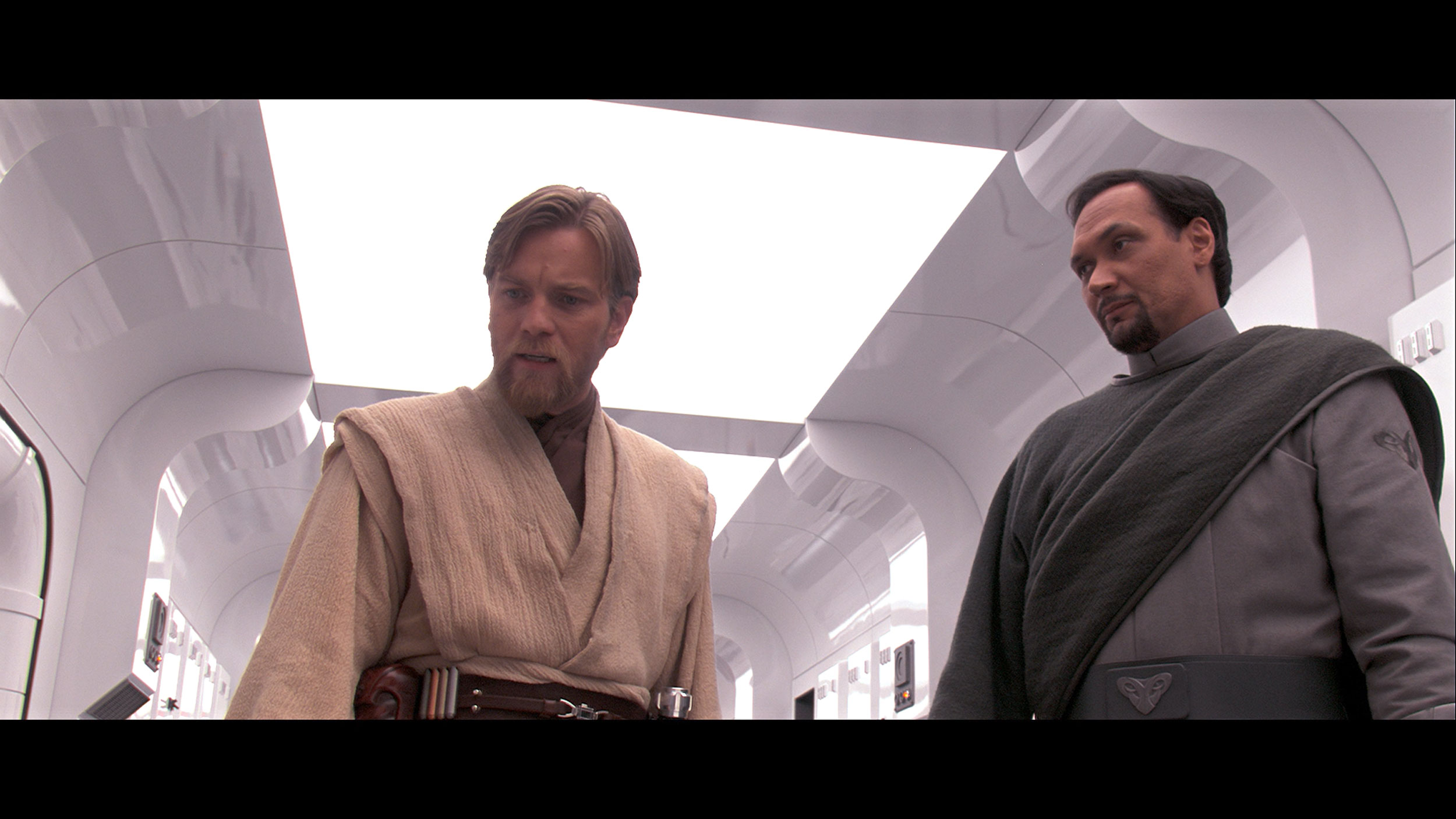
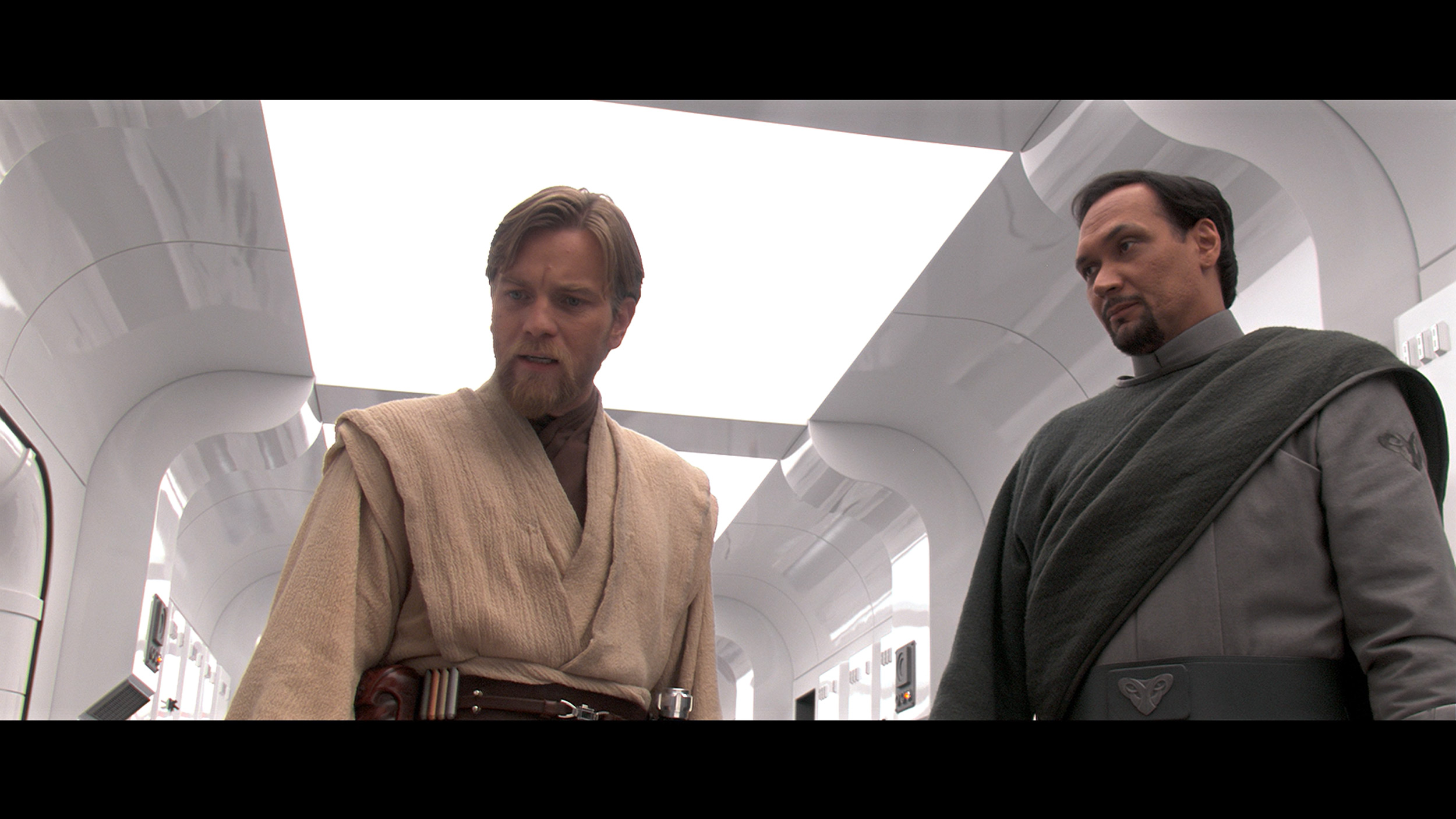
Factory Mode
After calibration


Factory Mode
After calibration
We must admit that when the U8Q arrived at our editorial office, we were slightly surprised… and positively so. Usually, in televisions, the white balance immediately requires adjustment – it can be too warm or too cold, which immediately leads to strange colour mistakes. Meanwhile, here the situation looks really good straight out of the box. Of course, we are talking about our unit, so there is no guarantee that every model will be equally well calibrated, but in our case, the first impressions were very positive. The only more apparent issue concerned the way the television manages brightness. Looking at the EOTF graph, it is clear that the U8Q tends to brighten small elements on the screen. This, in turn, caused what we mentioned earlier – slight overexposure and the impression that the entire scene can be a bit too bright. However, this is not a flaw that undermines the picture, rather an effect characteristic of this model.
We primarily tested the QNED86A in Filmmaker mode, which is designed to provide the most faithful picture. Unfortunately, right out of the box, there were quite a few shortcomings. The most noticeable was the poorly tuned white balance – there was a lack of blue, causing the overall image to take on a slightly yellowish, and at times even orange hue. An even bigger problem turned out to be the way the television manages brightness. Due to its technical limitations – specifically, local dimming that only works along the edges of the screen – the QNED86A tends to oversaturate entire scenes. This is where the flattening effect we mentioned earlier comes from. Instead of clear depth and contrast, we get something akin to “boosted brightness,” which can strain the eyes over time.
Color reproduction after calibration
8/10
7.6/10




Of course, we wouldn’t be ourselves if we didn’t make adjustments to the white balance. After calibration, we managed to equalise the SDR signal to practically perfection – older films, YouTube content, and classic television looked almost ideal on the U8Q. This is truly an exceptional level that shows this model can do a lot if given a bit of help. Unfortunately, the situation is different with HDR content. The colours themselves don’t pose many problems, but the U8Q’s biggest issue remains the EOTF brightness characteristics. In practice, the television tends to “over-expose” beyond how the image should look in its original form. It’s that slight "bleeding" that we noticed earlier in comparisons with the best screens on the market. It’s a bit of a shame that this characteristic can’t be fully tamed – if we could maintain equally good control over brightness in HDR as in SDR, we would be dealing with an absolutely reference-quality image.
What has been saved in the QNED86A6A is undoubtedly the colours. After calibration, the white balance was set with great precision, ensuring that deviations on the Colour Checker palette mostly did not exceed the visibility threshold for the human eye. In other words – the hues finally looked natural, without the strange yellow or orange tones that previously spoiled the perception. Unfortunately, even the best calibration cannot circumvent the structural limitations. The already very modest number of local dimming zones and their unfortunate placement mean that the analysis of the EOTF curve in films still showed clear over-brightening of scenes. The picture tended to flatten, lacking cinematic depth. Fortunately, this effect is not so noticeable in older productions or in SDR content. There, the calibration truly makes a difference and allows one to harness the QNED so that the image can be appealing. However, the specifics of this construction – especially the issues with contrast – cannot be completely bypassed.
Smoothness of tonal transitions
8.9/10
8.9/10




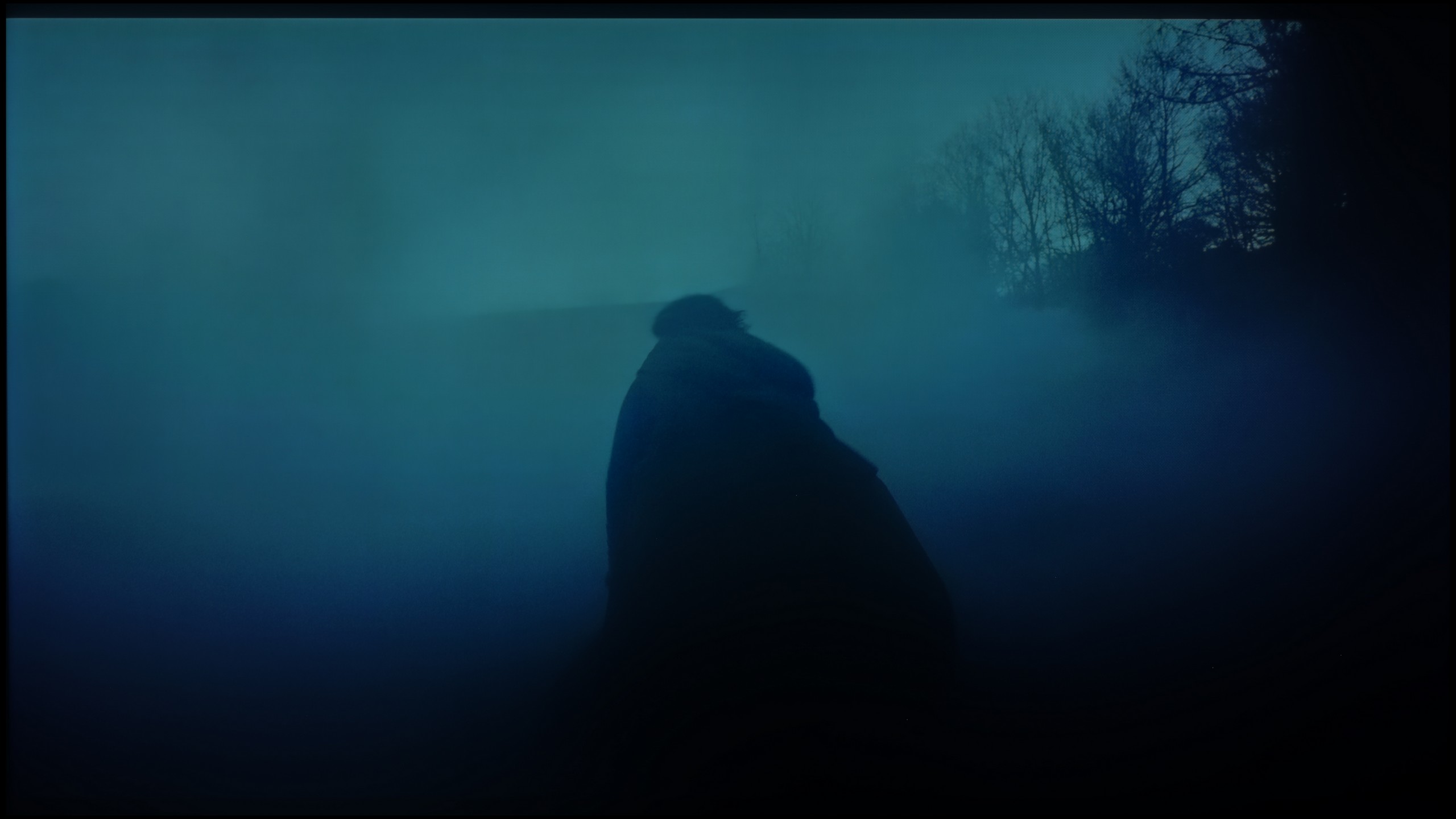

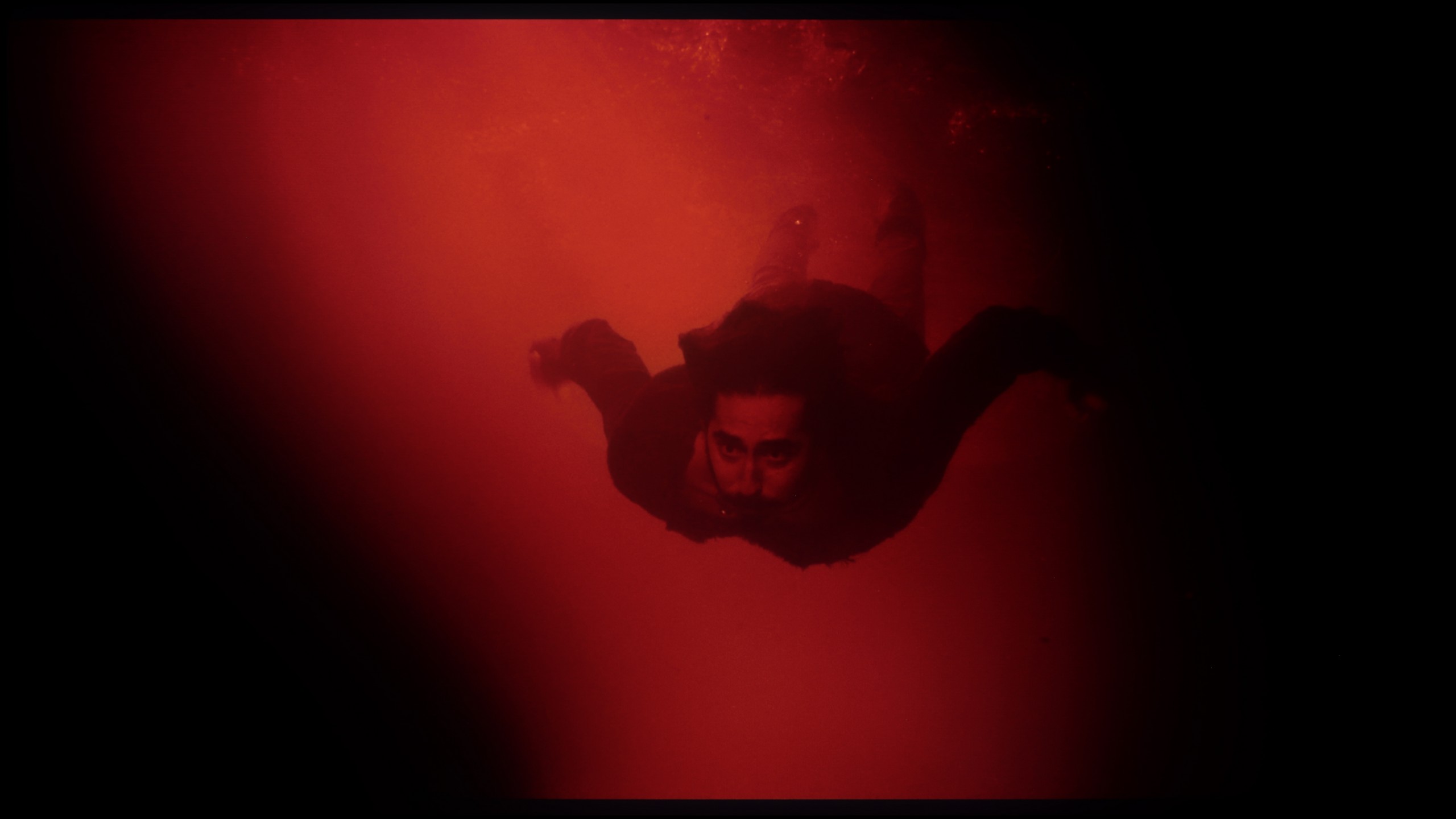





When it comes to the fluidity of tonal transitions, the Hisense U8Q made a really great impression on us. Even in the darkest scenes, where unsightly bands and ugly transitions usually appear on other televisions, here the image remains smooth and cohesive. Nothing layers, there is no "stair-step" effect – everything looks as it should. Similarly, in brighter shots – it is also very good. Sure, if we looked through a magnifying glass, we would probably find some minor flaw, but during normal viewing, it's hard to complain about anything. Overall, it performs very, very well!
The colour blending is one of the stronger points of the QNED86A. During everyday viewing, the image is presented very smoothly, without noticeable "steps" or sudden transitions between colours. The television handles colour merging in a quite natural way, so with most material, it is difficult to spot issues with gradation. Any imperfections only appear under extreme conditions – for example, in the darkest parts of films, where even much more expensive televisions can encounter problems. There you might notice slight banding or characteristic stripes, but these are marginal situations that should not interfere during normal usage. Overall, the QNED86A performs quite well in this category and has nothing to be ashamed of in comparison to the competition.
Image scaling and smoothness of tonal transitions
8/10
7.8/10
Smooth transition function
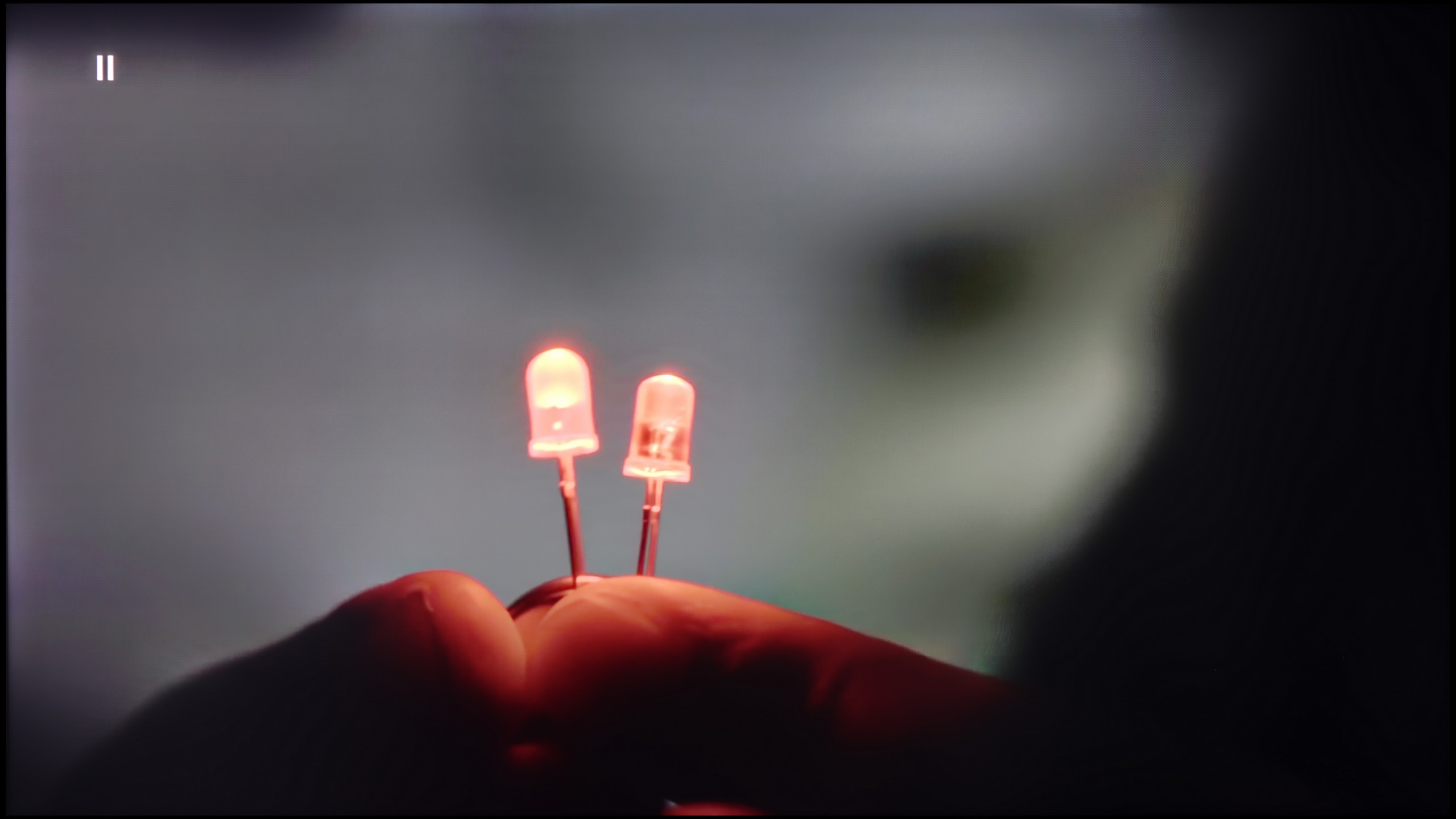

Image without overscan on the SD signal


Hisense U8Q handles lower quality materials quite well. The television can smooth out tonal transitions thanks to the "Smooth and Gradient Picture" feature – it works best when set to Medium. At this setting, it nicely dims unwanted bands and unevenness in the picture, but importantly, it does not remove the film grain or fine details.
The upscaling itself is also at a good level. Images from lower resolutions appear smooth and soft, sometimes even overly so – we get a plastic effect that may not appeal to everyone. Fortunately, this can be easily corrected with the sharpness slider, allowing the picture to be adjusted to personal preferences.
If someone is worried about potential "steps" when blending colours, there is a simple way in the QNED86A to address this. Just activate the feature called Smooth Gradation and set it to a medium level. Then the television really smooths out all those unwanted transitions quite well – especially in older productions – and it does so in a way that film grain doesn't disappear, nor do strange artefacts appear. In other words, it can be used without concern.
The upscaling itself also performs quite well. Of course, there are no miracles here – with lower quality sources, you can notice characteristic ringing. Fortunately, there is a sharpness slider in the menu, and if someone prefers a more "soft" image, it can be quickly adjusted to personal taste.
Blur and motion smoothness
7.8/10
7.9/10
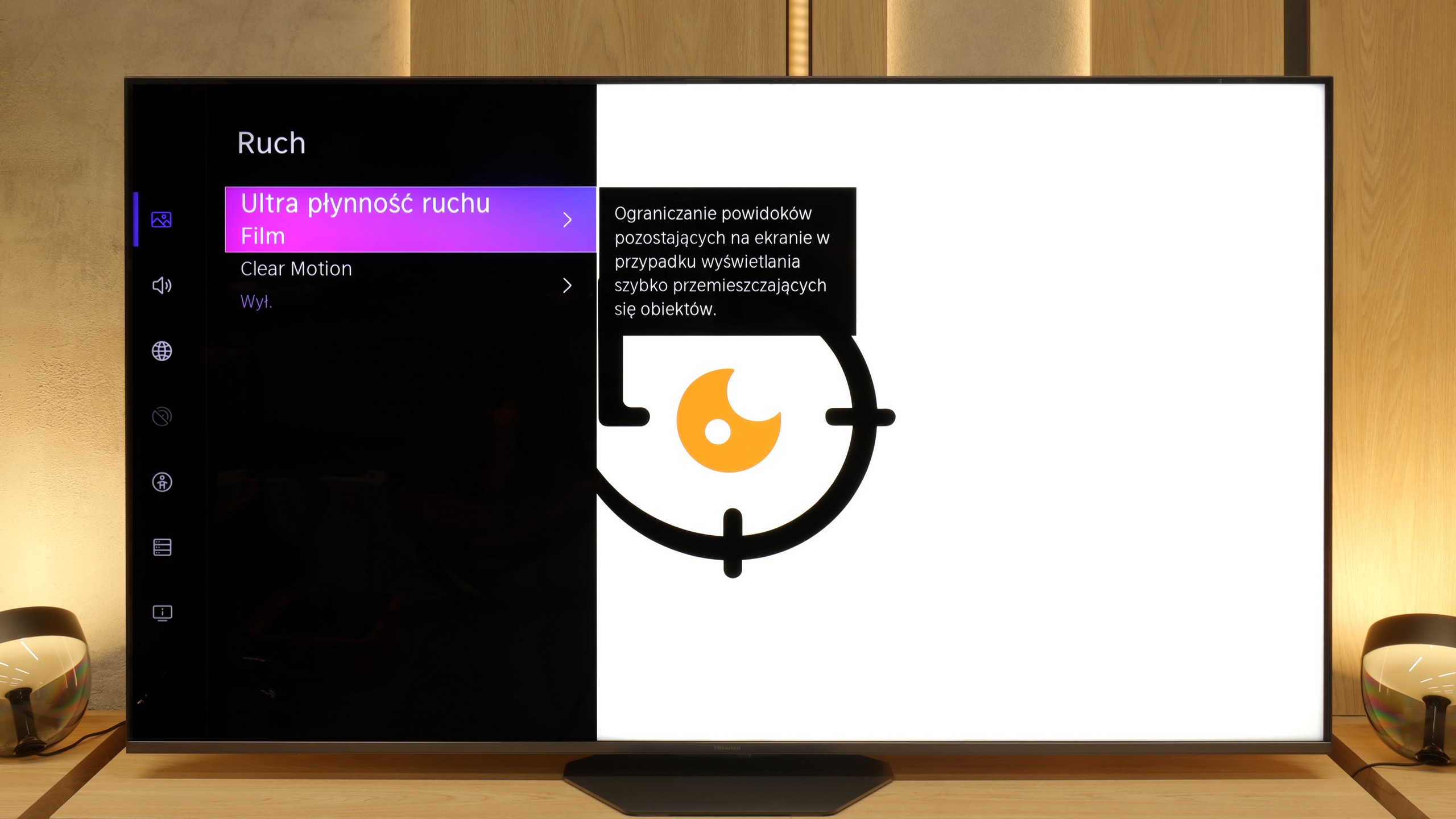

Blur (native resolution, maximum refresh rate):
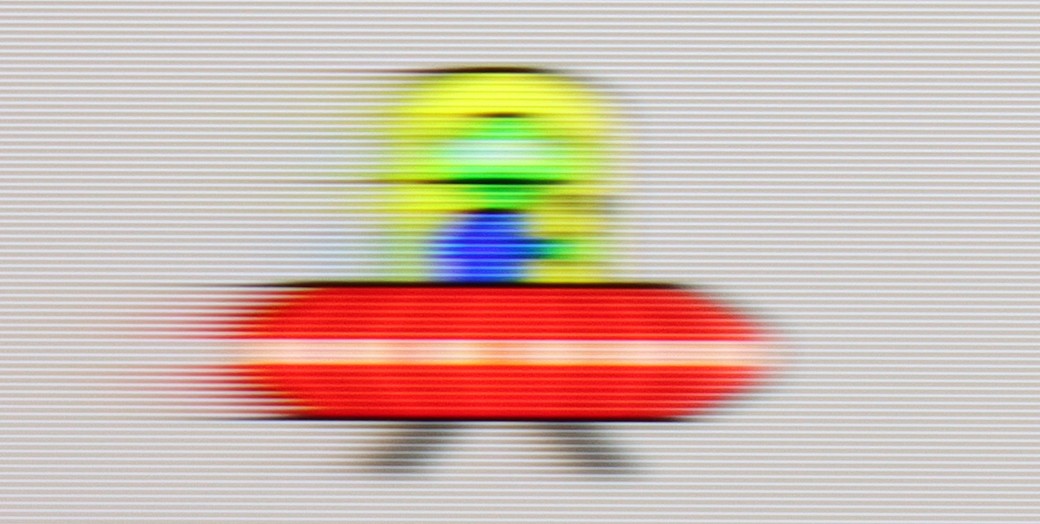
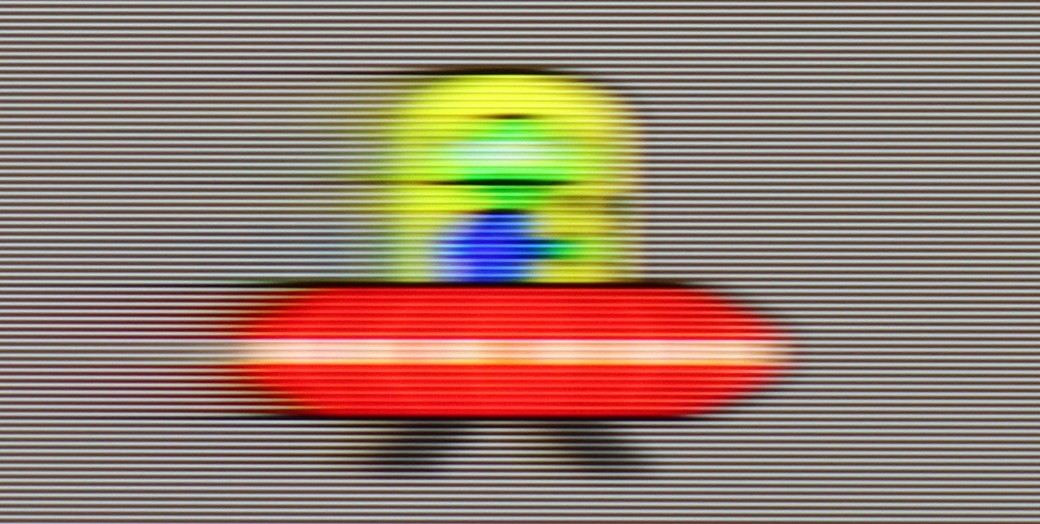
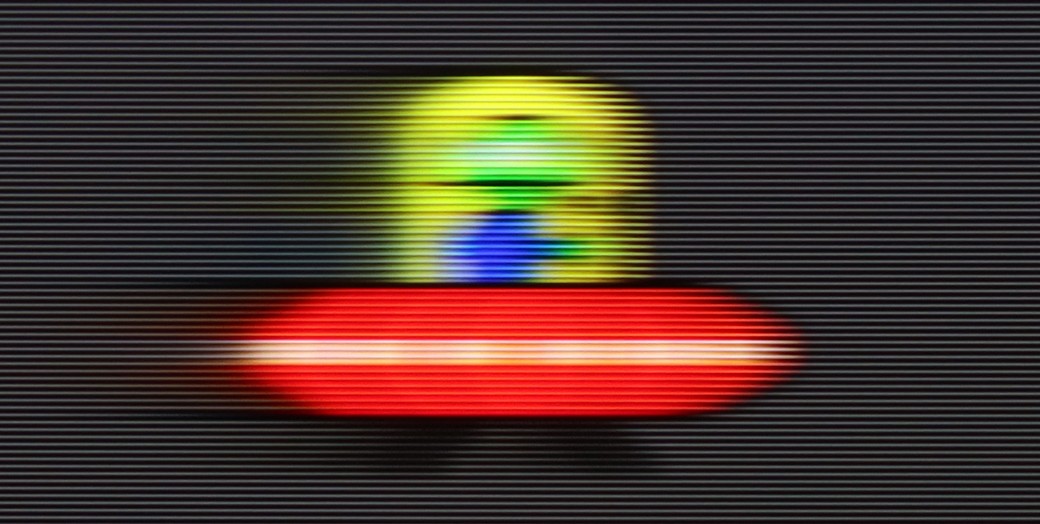



Blur (BFI function enabled):
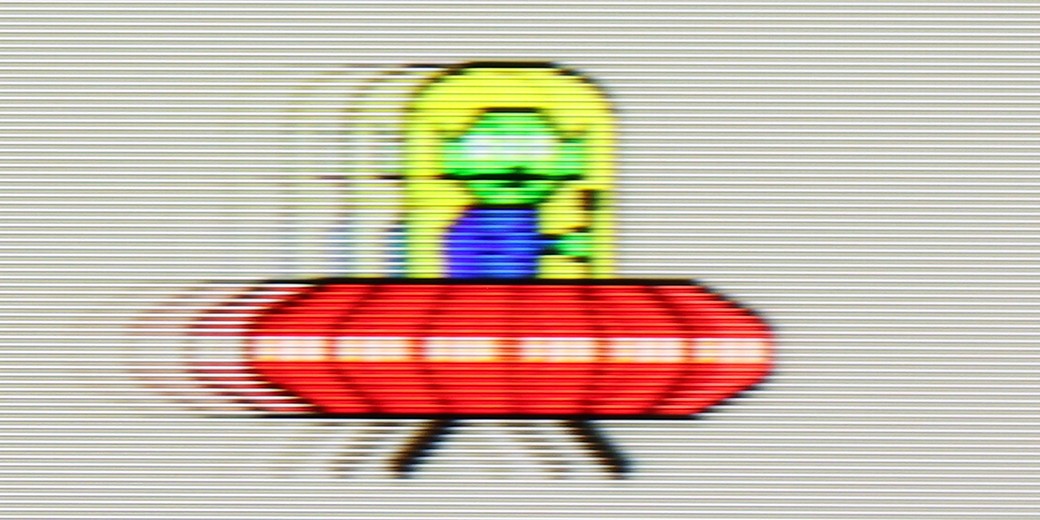

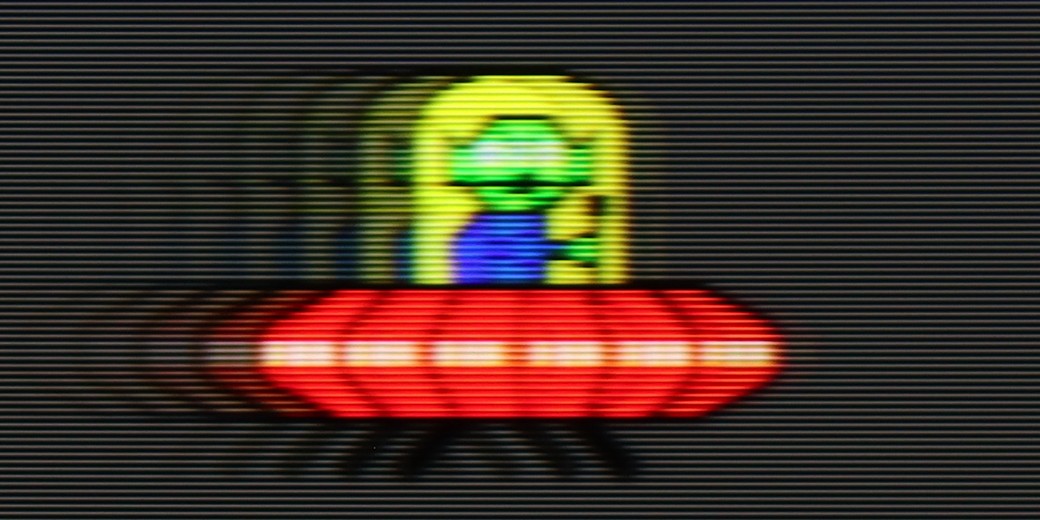



Smużenie (1080p@288Hz):

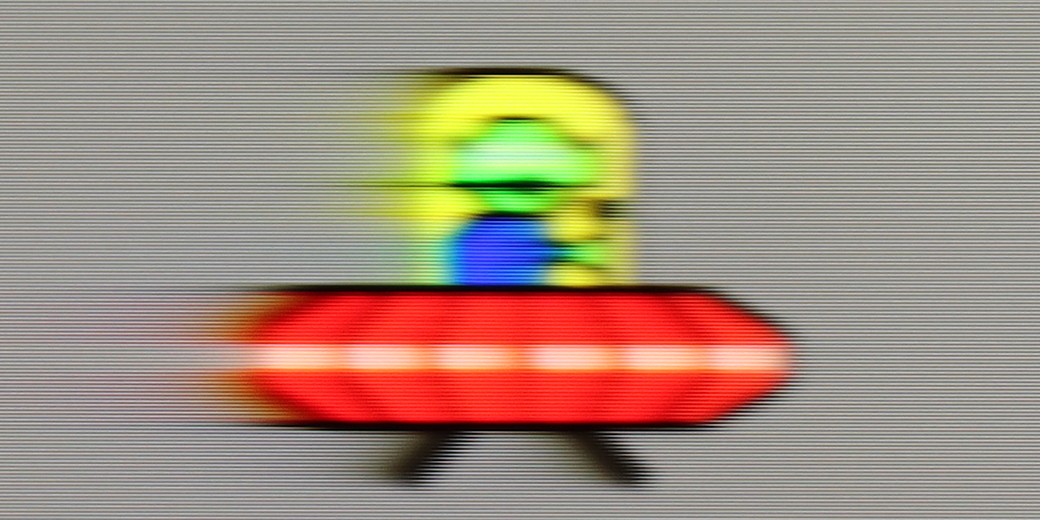
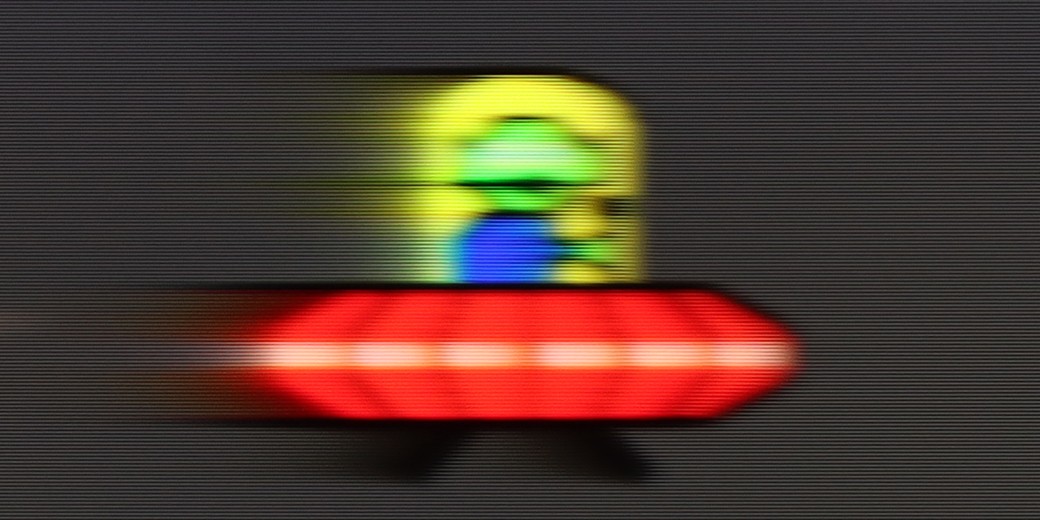
Smużenie ():
Hisense U8Q features a panel that can refresh the image up to 165 Hz in 4K resolution. In practice, this will primarily be utilised by PC gamers, but as the saying goes – it’s better to have it than not 😊. For films and series, we have a built-in smoothness enhancer called Ultra Motion Smoothness. In the settings, it can be easily adjusted to suit personal preferences – whether we want a more “cinematic” frame rate or a smooth, theatrical spectacle.
The QNED86A is equipped with a panel boasting a refresh rate of 120 Hz, so it can be said from the outset that it is suitable for both sports and gaming. And indeed, it is – the image appears smooth, and motion blur is not particularly intrusive. IPS panels have always had some issues with this, and here too, slight blurring can sometimes be noticed, especially in very dynamic scenes, but it is not something that ruins the viewing of a match or a fast-paced game. For cinema and sports fans, LG has included the traditional TruMotion smoothness enhancer. In the menu, we have two sliders – one for movies (De-Judder) and the other for sports (De-Blur). The first adds missing frames and can be adjusted to modify the character of motion – from raw, cinematic to a smoother, more ‘theatrical’ look. The second improves sharpness during dynamic actions, so it's worth turning it up a bit if you watch a lot of sports.
Console compatibility and gaming features
8.5/10
9.8/10
- ALLM
- VRR
- VRR range48 - 288Hz48 - 120Hz
- Dolby Vision Game Mode
- Correct implementation of HGIG
- 1080p@120Hz
- 1440p@120Hz
- 4K@120Hz
- Game bar
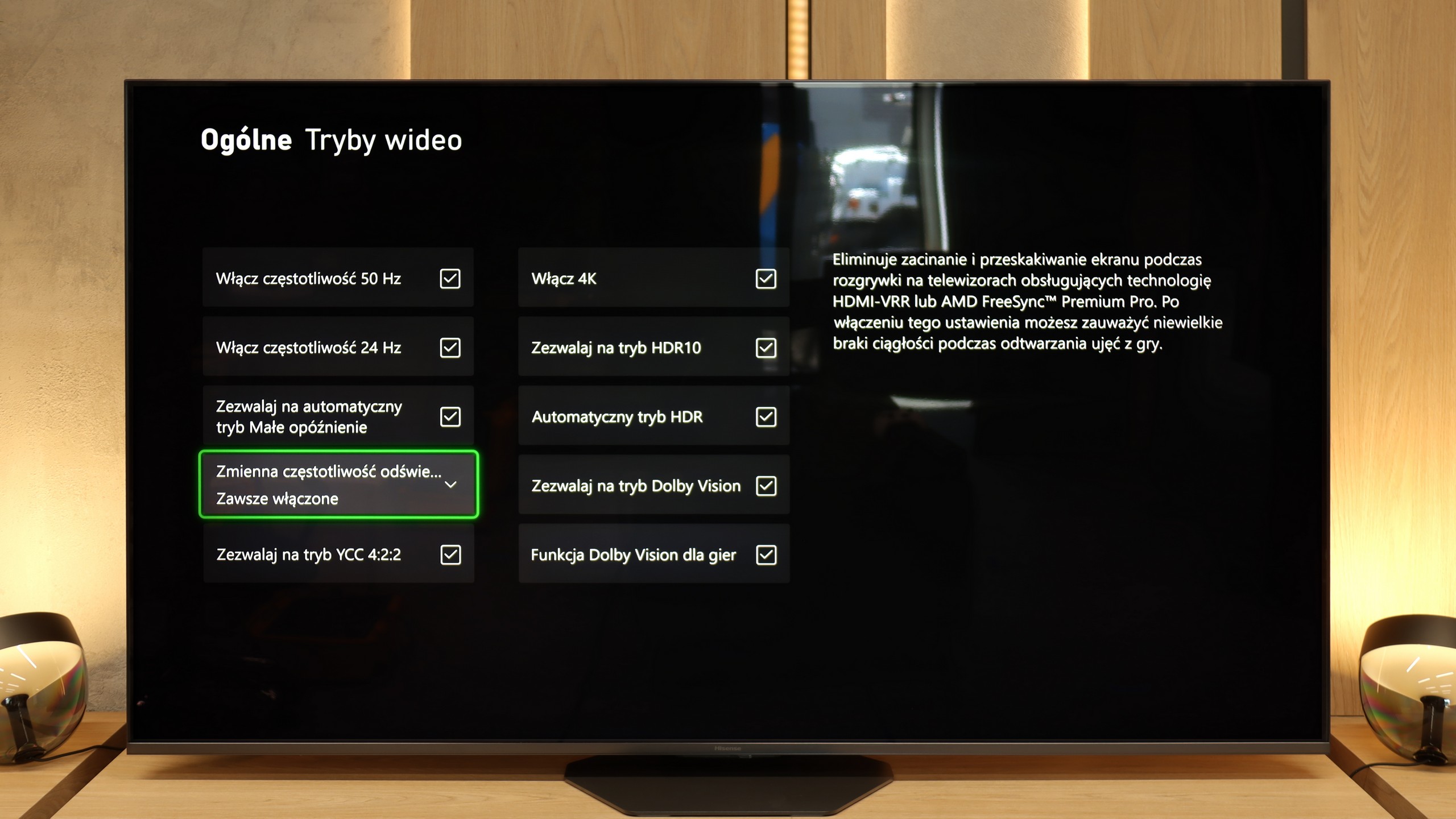

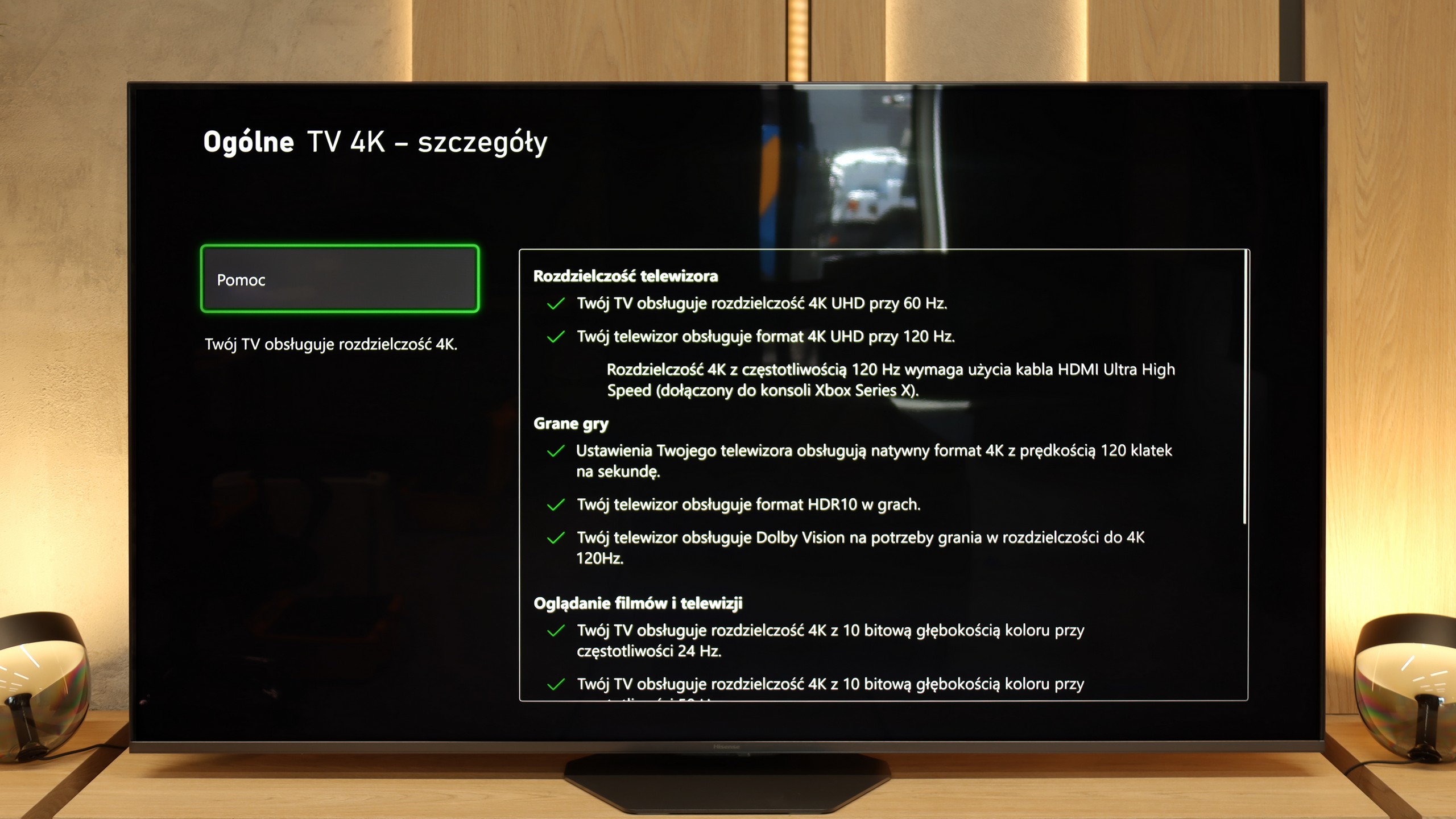

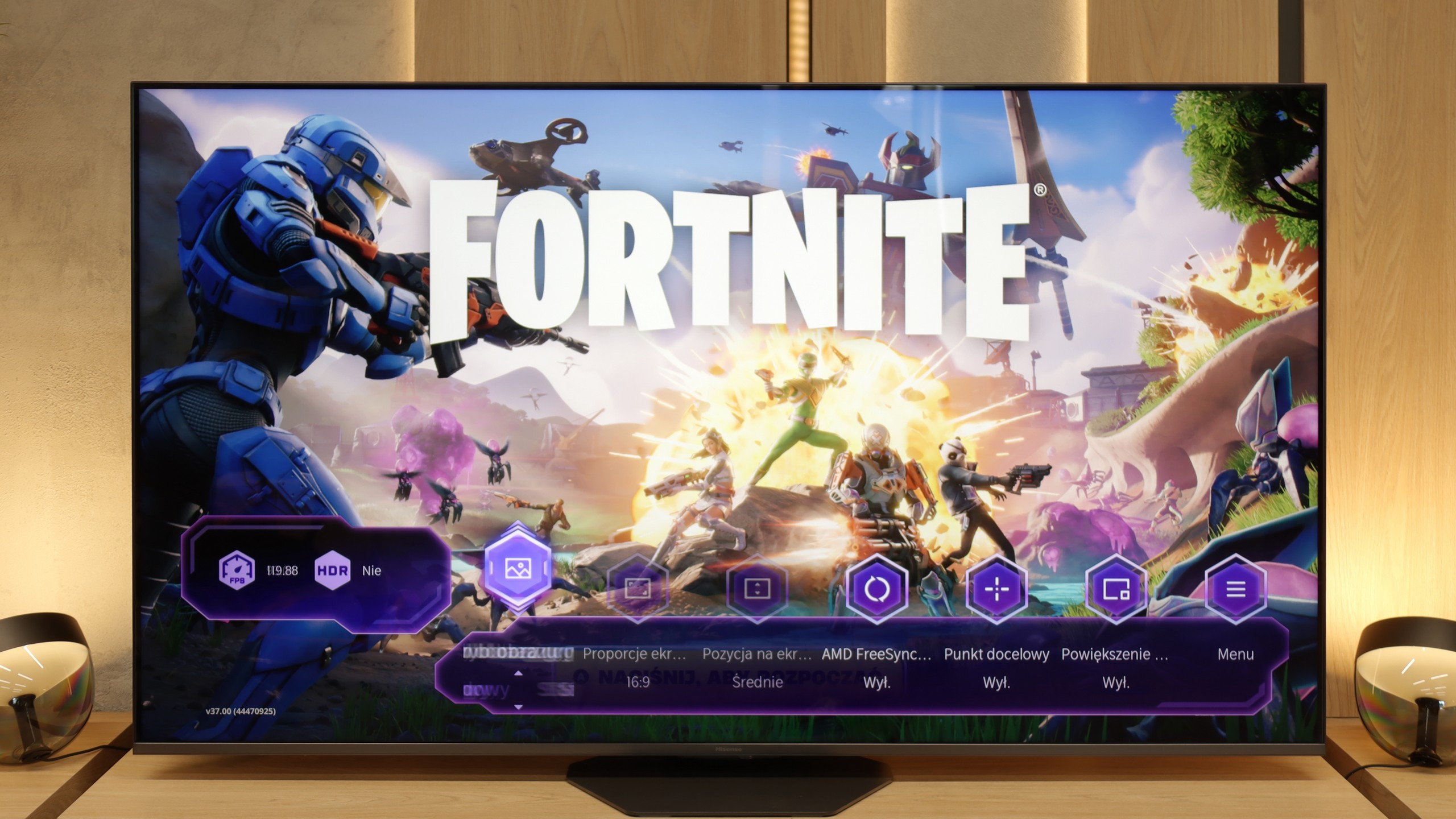

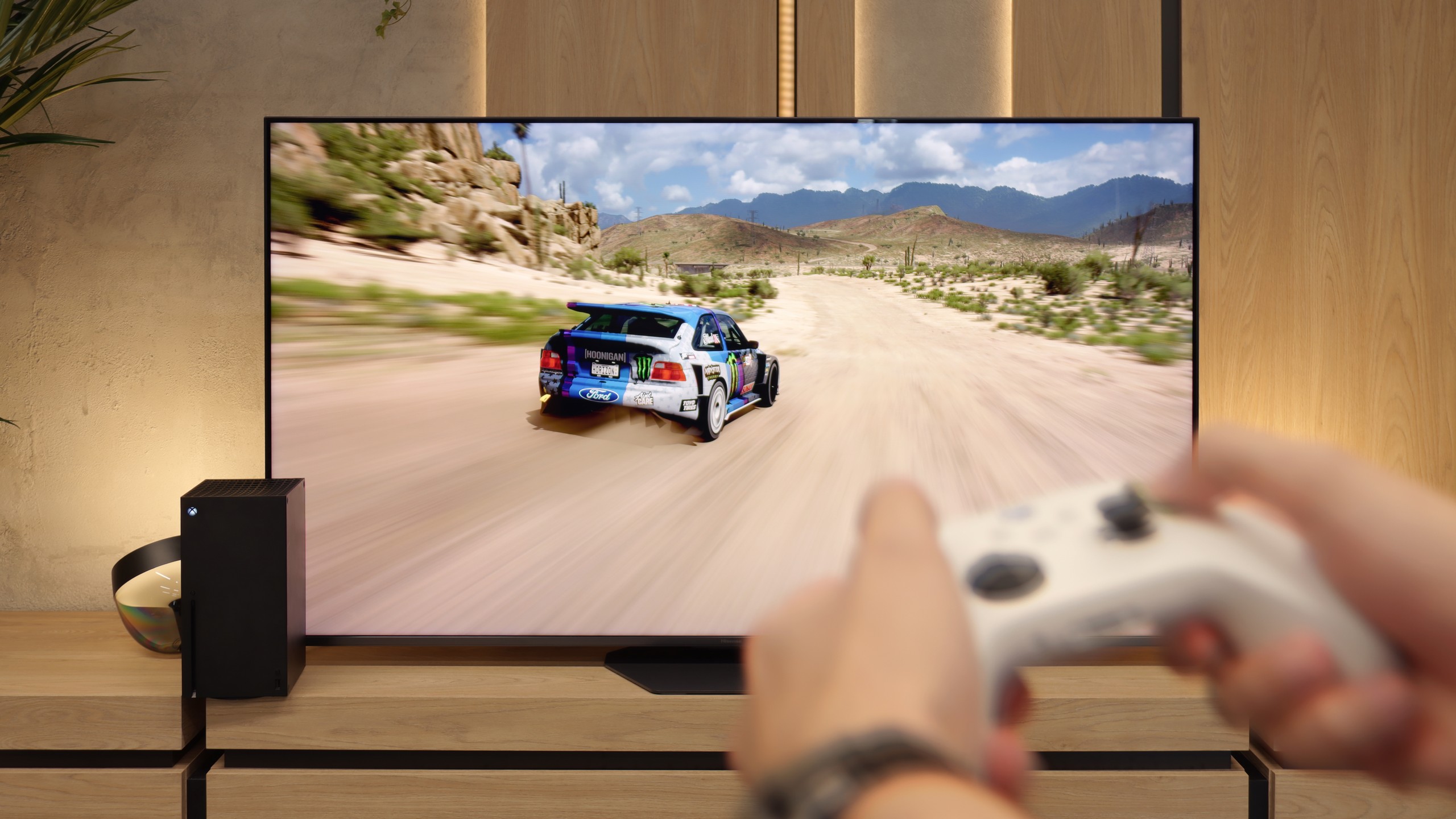

In terms of features, the Hisense U8Q has practically everything one could expect from a modern gaming television. Thanks to the new processor, the manufacturer managed to implement as many as three HDMI 2.1 ports, so there is no problem connecting several consoles or a computer. On top of that, it includes all the key technologies – Game Bar with parameter preview, variable refresh rate (VRR), automatic low latency mode (ALLM)… in a word, a complete set.
But as is often the case with Hisense, it fell a bit short of perfection. The biggest drawback remains the lack of support for the HGiG format, which allows the brightness of the television to be adjusted to the console and maximises HDR in games. It’s a shame, because if this element were included, we would have a device practically made for gamers. As it stands, the U8Q remains “only” a very good choice 😉
In terms of gaming, the LG QNED86A6A is a complete tool. It features four HDMI 2.1 ports with full bandwidth of 48 Gb/s, which means that whether you connect a PlayStation 5, Xbox Series X, or a powerful PC, everything will run in full 4K at 120 Hz with support for all functions. This is a significant advantage, as some competitors still only offer two such ports, which can be troublesome with multiple devices. It also includes VRR, or variable refresh rate, which eliminates screen tearing, as well as ALLM, which automatically activates game mode when the console is turned on. Dolby Vision Gaming is also included, along with proper implementation of the HGiG format, so titles that support these formats look more vivid and detailed. On top of all this, there is the Game Optimizer – a sort of control centre for gamers. From this interface, you can view picture parameters in real-time, quickly change modes, activate additional features, or adjust image settings to your personal preferences. The LG QNED86A6A essentially has everything one could expect from a modern gaming television.
Input lag
9.8/10
9.9/10
SDR
HDR
Dolby Vision
The Hisense U8Q really handles signal delay well. In 120 Hz mode, the input lag is around 10 ms, while with 60 Hz content it hovers around 18 ms. These are values that place it among the fast televisions, and in practice, it is difficult to have any significant complaints about them. The response is instantaneous; controlling a character or a car on the screen happens without perceptible delays. Whether someone is playing fast-paced shooters or calmer narrative titles, the U8Q performs excellently.
There is really nothing to complain about here. The QNED86A6A achieves excellent results – around 5 ms with 120 Hz content and roughly 15 ms with 60 Hz. These values will easily satisfy both console gamers and those who connect a PC to the television. The response to movements is instantaneous, so you can forget about delays between the image and the action on the controller.
Compatibility with PC
8.4/10
8/10
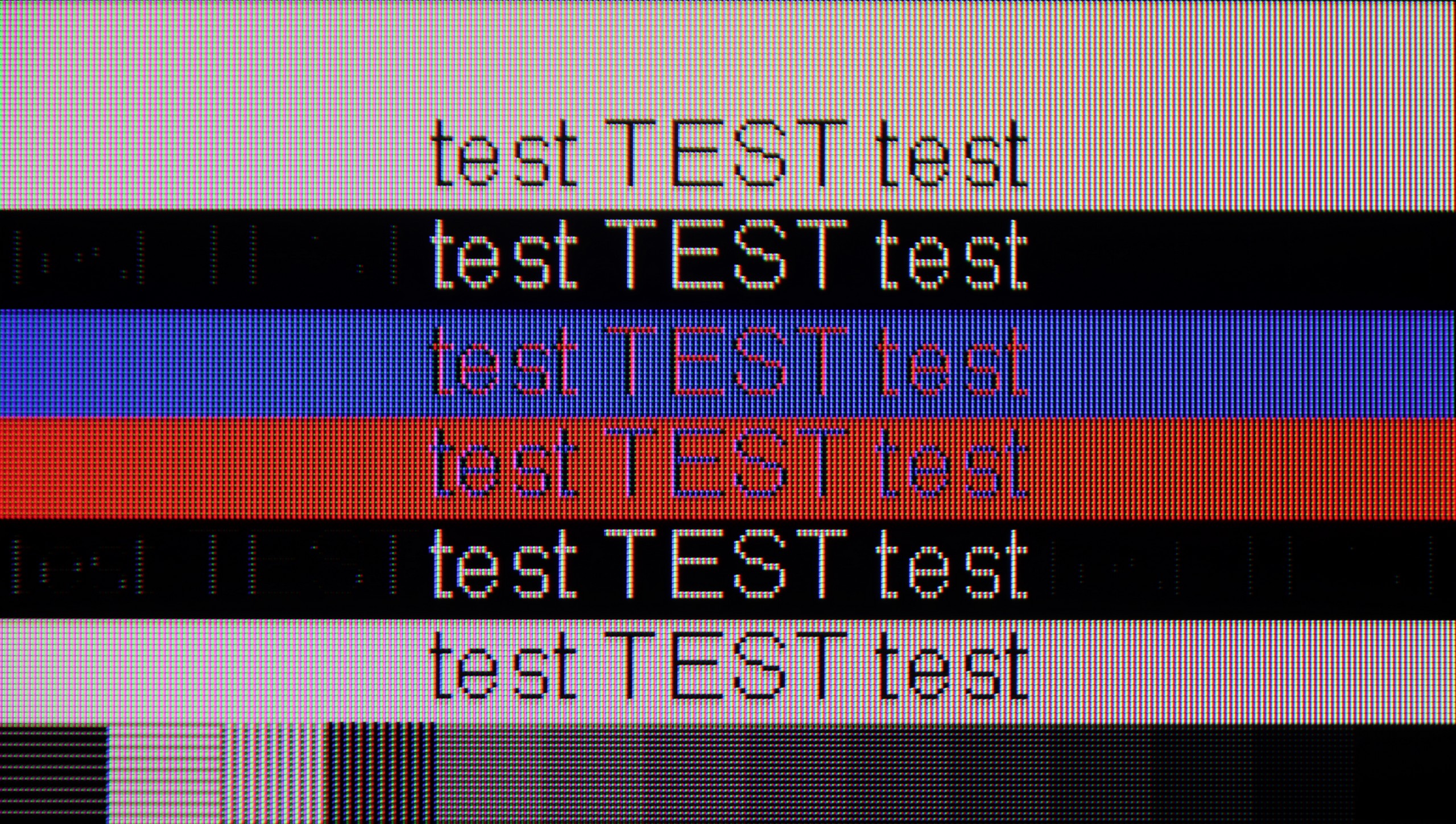

As we mentioned regarding the features for gamers – Hisense U8Q also communicates well with computers. The 4K panel with a refresh rate of 165 Hz is impressive on its own, and at Full HD resolution, it can even boost to 288 Hz. This is great news for e-sports fans, where speed of reaction matters most, rather than the highest image quality. Additionally, it supports G-Sync and FreeSync, so gameplay is smooth, without stutters and annoying frame tearing.
A pleasant surprise is the presence of a USB-C port with DisplayPort functionality for laptops or even phones. This is a true novelty in televisions, and it's quite possible that Hisense will be a pioneer here, setting the direction for the competition.
When it comes to working with text, we must mention one small inconvenience. Although the U8Q correctly handles chroma 4:4:4, it has issues displaying very thin, horizontal fonts. This means that some subtitles or interface elements may be hard to read. Probably no one buys this model with office work in mind, but if someone were to have such a plan – it’s worth keeping this in mind.
LG QNED86A, thanks to the use of an IPS matrix, a full RGB subpixel layout, and correct implementation of chroma 4:4:4, makes fonts look fantastic on the QNED86A6A. The text is sharp, clear, and legible, making the television ideal for office work. This is important, as this year the model also debuts in a 43" size, and such a variant can easily land on a desk and serve as a large monitor. Of course, some users who opt for the 43" version will be gamers, and here too there are no reasons for complaints. The television supports 4K at 120 Hz, so gameplay is smooth and enjoyable. It's a bit of a shame that there is no higher refresh rate mode like the 144Hz declared by the manufacturer, as PC gamers would surely appreciate that. Despite this, the QNED86A6A performs really well as a monitor for gaming and work.
Viewing angles
3.2/10
6.9/10
In terms of viewing angles, the Hisense U8Q performs averagely – typical for a VA panel. It's a classic compromise: in exchange for much better blacks and contrast than in IPS panels, we must accept that watching from a wider angle does not look as good. Colours begin to lose intensity, and the picture slightly brightens. For a viewer sitting directly in front of the television – it’s a dream. For someone who sits more to the side – it’s a bit less so.
QNED86A6A performs very well in this regard. The IPS panel used here ensures that the image maintains its brightness and colour saturation even when viewed from an angle. There is none of the fading effect often seen in cheaper TVs with VA panels. Of course – there is no point comparing this to the level offered by organic panels, where colours and contrast remain perfect from almost every angle. But as far as LCD TVs go, this is definitely one of the better results and is more than sufficient for watching films or sports together on the sofa with a larger group.
TV efficiency during daytime
8.2/10
5.8/10
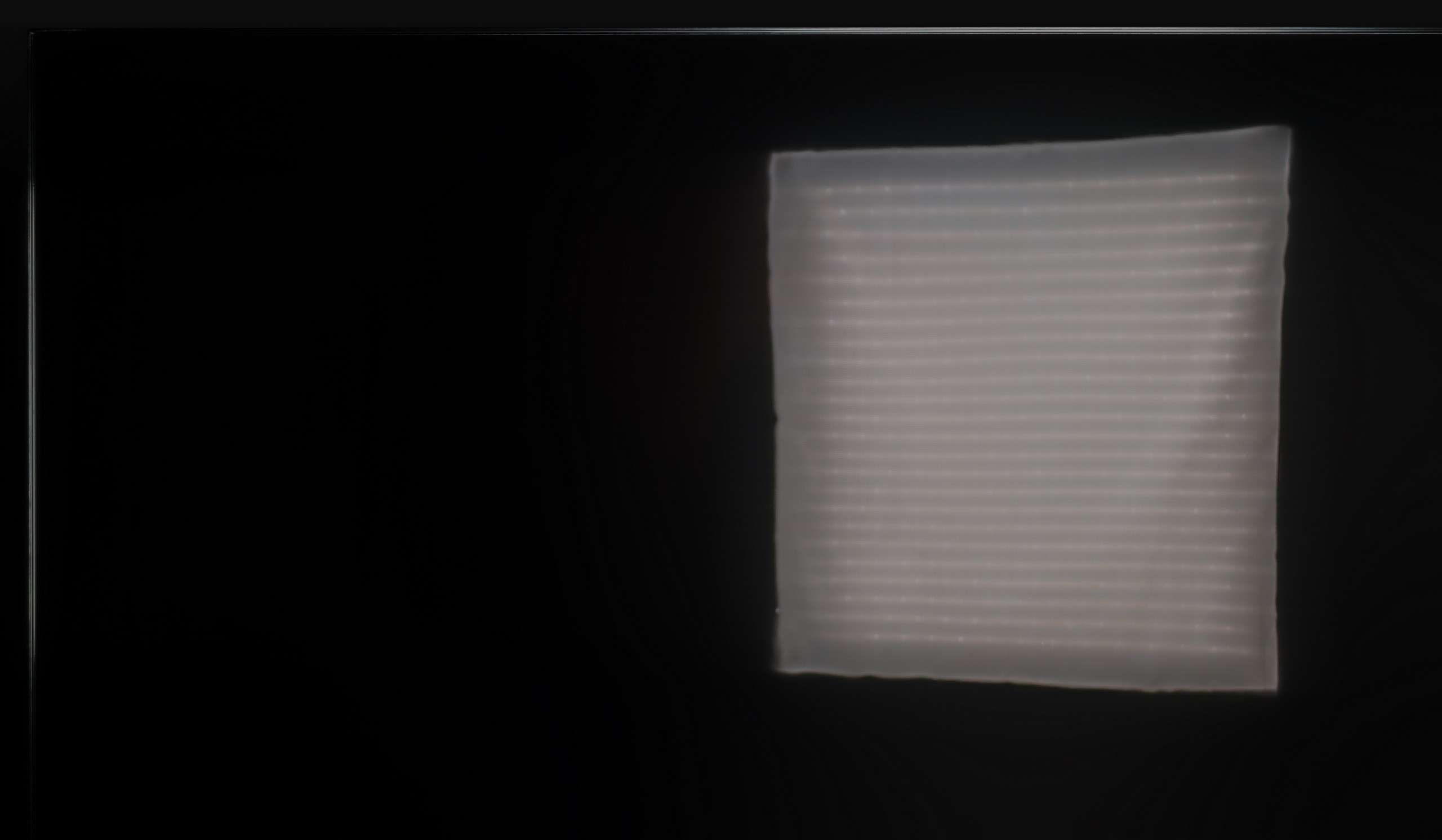

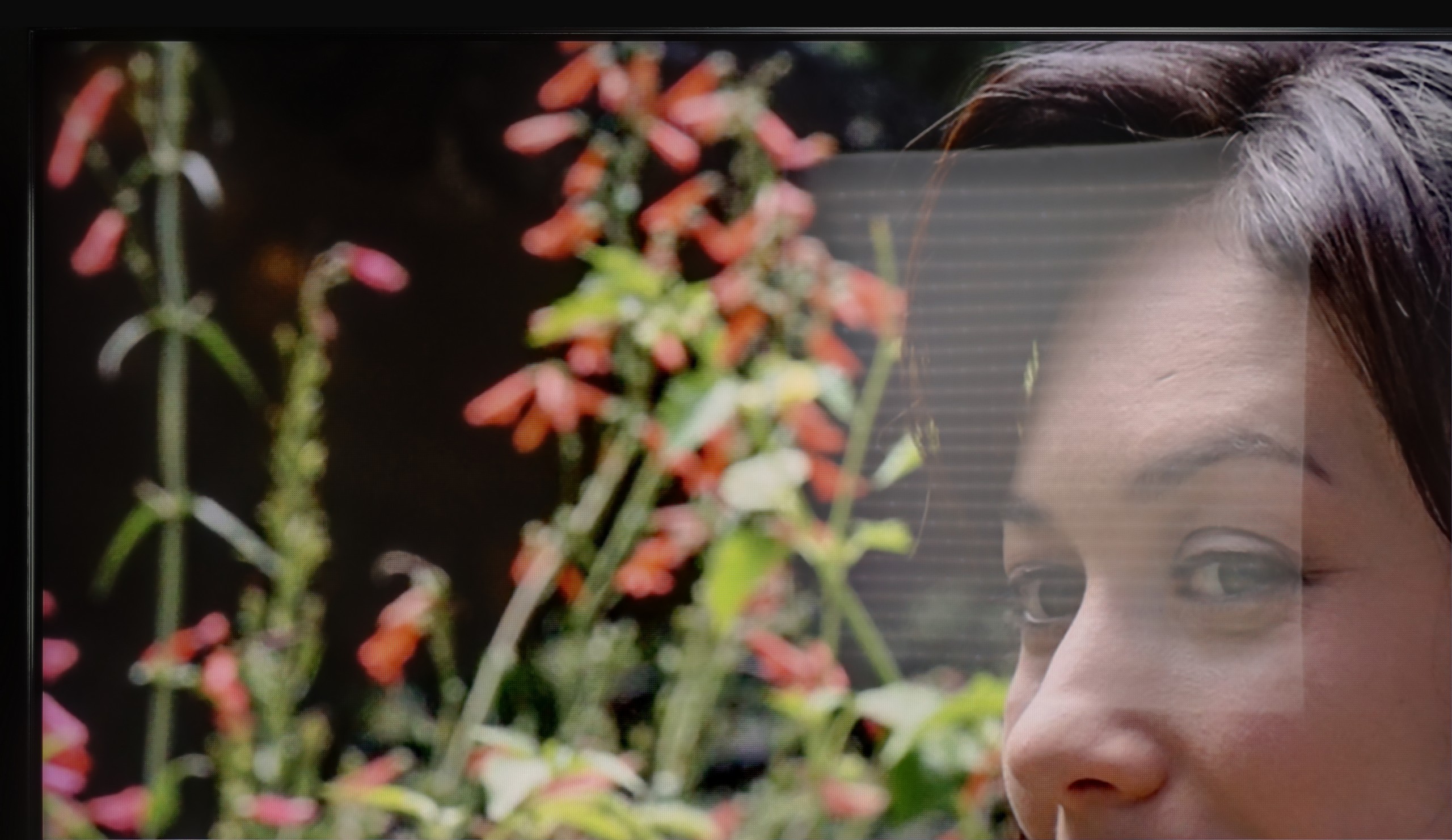

Matrix brightness
Average luminance SDR
LG QNED86A / QNED85A / QNED87A: 462 cd/m2
Hisense U8Q: 914 cd/m2
Hisense has opted for a new anti-reflective coating called Anti-Reflection PRO. It aims to enhance viewing comfort in challenging lighting conditions – and it indeed does the job. Reflections do not disappear entirely, but they are well controlled and do not interfere with daily viewing. However, the highlight is the brightness in SDR – around 1000 nits! This is a result that would make even the top super premium models proud. As a result, the U8Q performs excellently in sunlit rooms and can confidently be considered one of the best televisions for daytime viewing.
QNED86A6A is not a champion of brightness, but it manages adequately. Thanks to the moderately high brightness of the panel and quite decent reflection handling, the television will perform well in typical, moderately lit living rooms. The image remains clear, and the colours do not lose their intensity in daylight. However, let's not fool ourselves; this is not a screen that will cope in extremely bright conditions, where sunlight streams through large windows and floods the room.
Details about the matrix
Subpixel Structure:
Panel uniformity and thermal imaging:
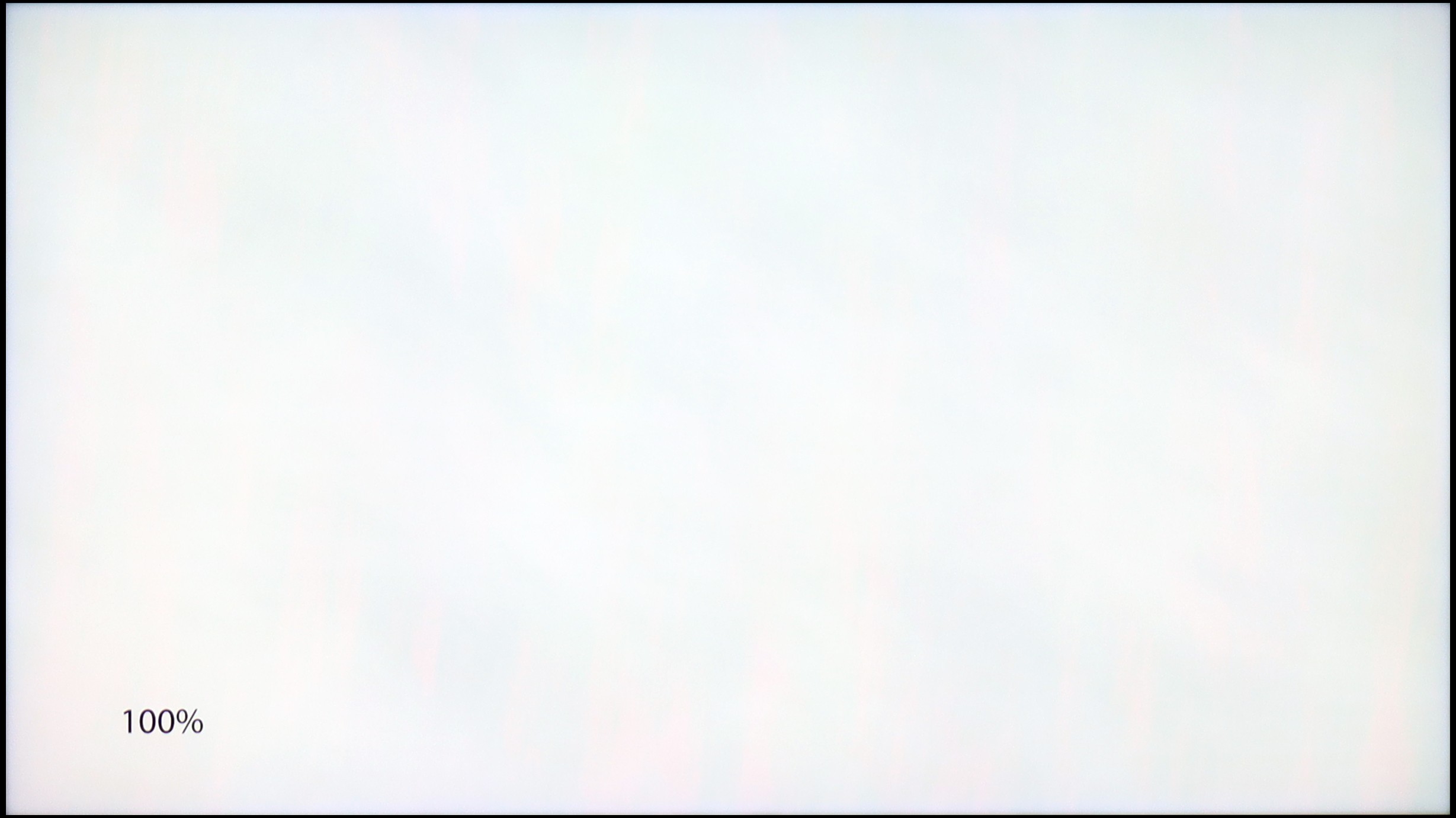

Hisense U8Q
LG QNED86A / QNED85A / QNED87A
TV features
9.4/10
8.4/10
- HDMI inputs0 x HDMI 2.0, 3 x HDMI 2.1 48Gbps0 x HDMI 2.0, 4 x HDMI 2.1 48Gbps
- Other inputsToslink (Optical audio), RCA (Chinch)
- OutputseARC (HDMI), ARC (HDMI), Mini-Jack (Headphones)Toslink (Optical audio), eARC (HDMI), ARC (HDMI)
- Network InterfacesWi-Fi 2.4GHz, Wi-Fi 5GHz, Ethernet (LAN) 100MbpsWi-Fi 2.4GHz, Wi-Fi 5GHz, Ethernet (LAN) 100Mbps
- TV receptionDVB-T, DVB-T2, DVB-S, DVB-S2, DVB-CDVB-T, DVB-T2, DVB-S, DVB-S2, DVB-C
Classic features:
- Recording to USB (terrestrial TV)
- Recording programming
- Picture in Picture (PiP)
- RF remote control (no need to aim at the screen)
- Backlit remote control
- Teletext
- Audio only mode
- Bluetooth headphones support
- Simultaneous Bluetooth headphones & TV audio
Smart features:
- AirPlay
- Screen mirroring (Windows Miracast)
- Voice search
- Voice search in native language
- Ability to connect a keyboard and mouse
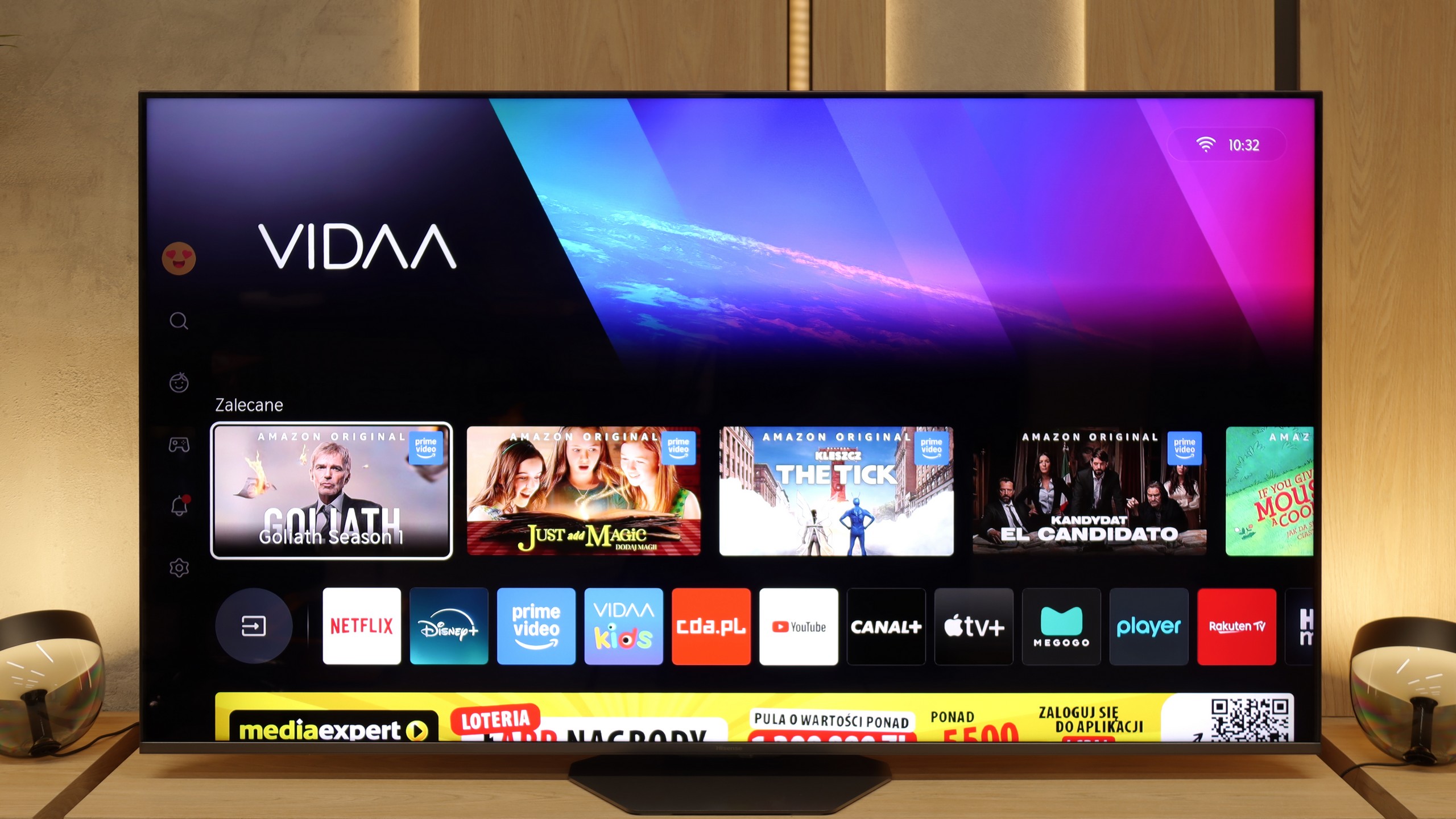
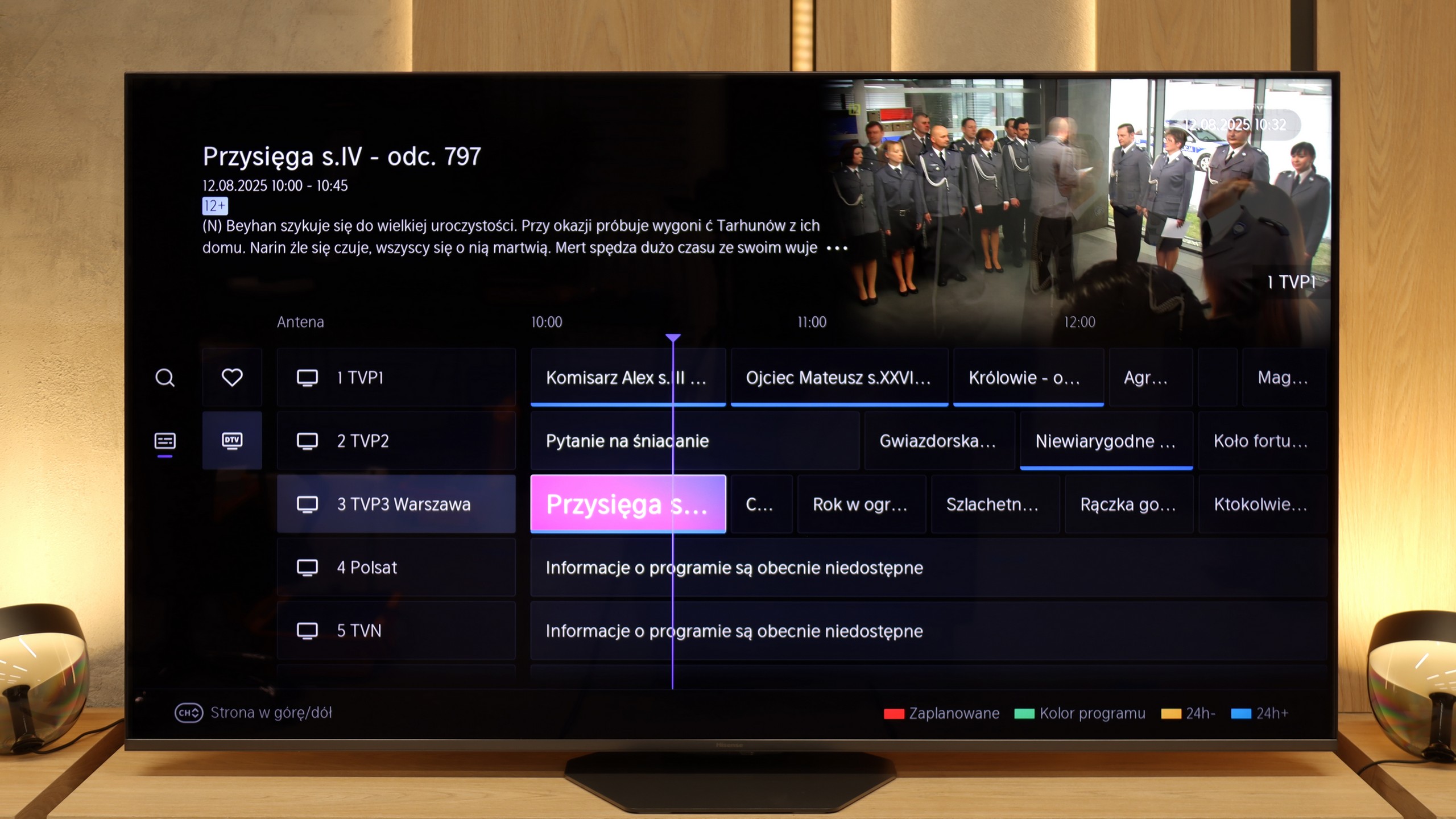
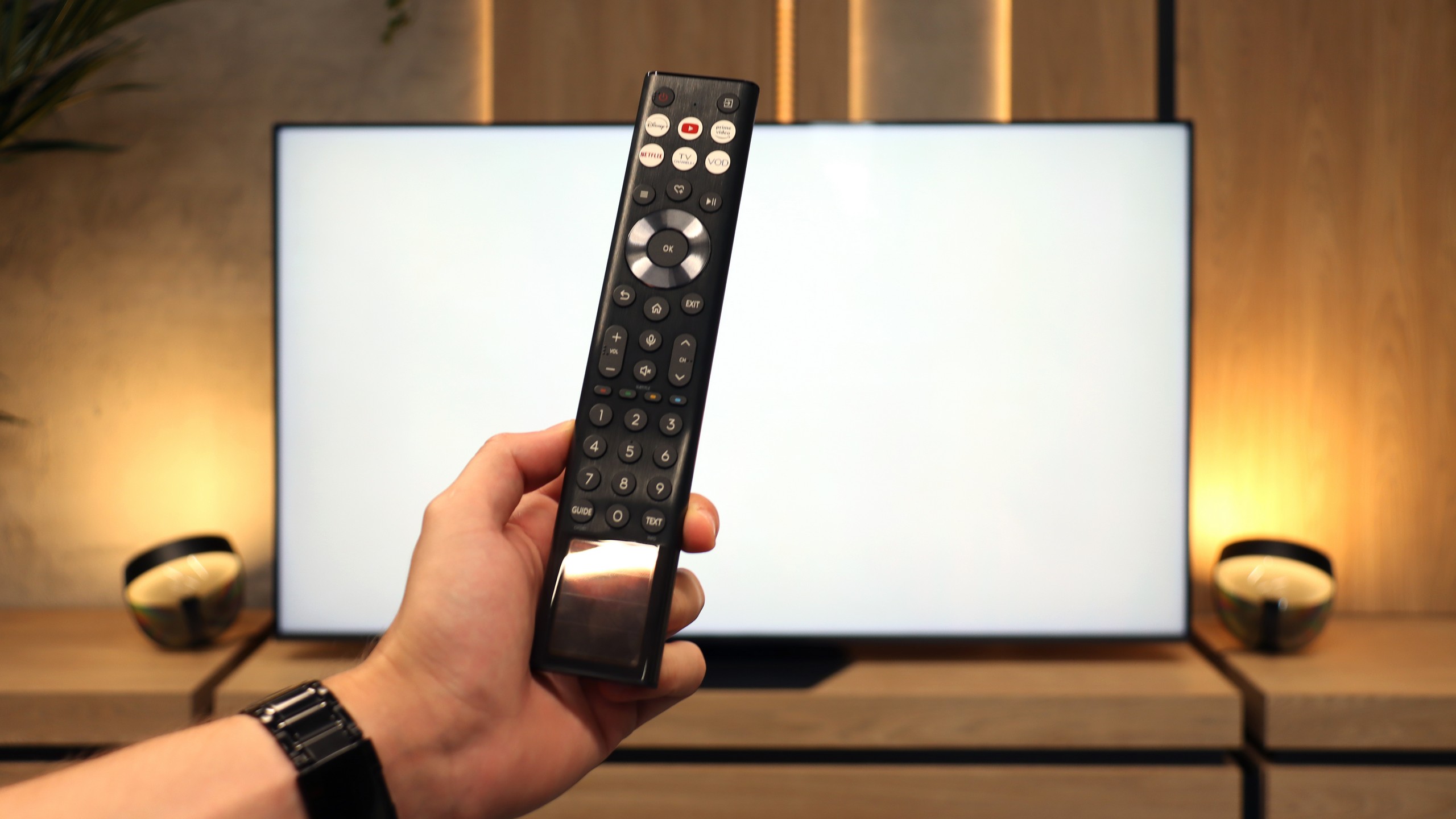
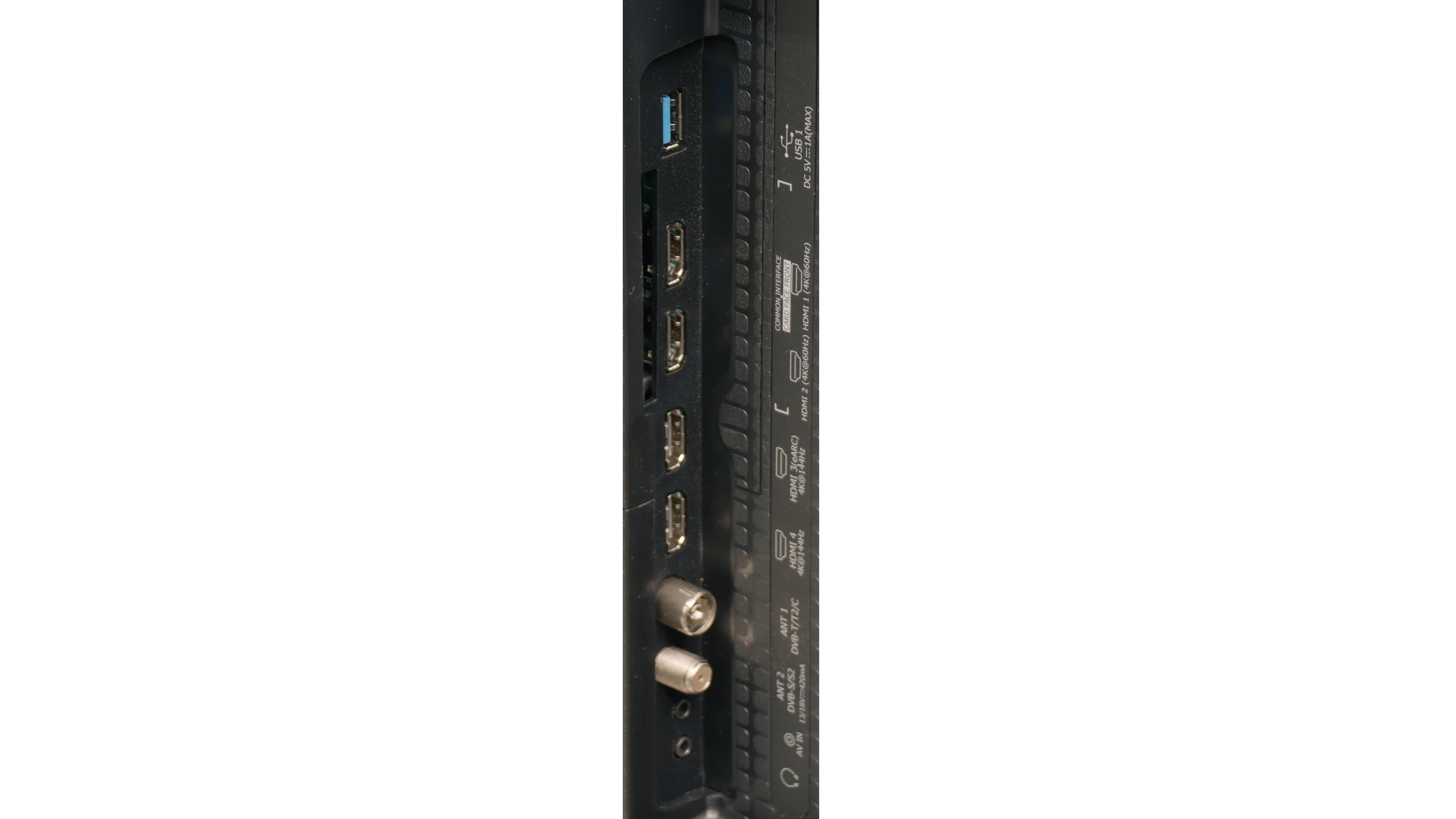




Classic Features
The Hisense U8Q runs on the VIDAA system, which can still be considered relatively new in the European market, but it must be admitted – the manufacturer has a lot to offer here. We find classic features that are still useful to many people: recording to USB, a clear EPG guide, and the ability to connect wired headphones, which will be especially appreciated by seniors. A nice addition is the presence of an audio jack – a connector that is slowly disappearing completely from televisions, yet here it has been retained.
USB-C in the Television!
A new feature in the U8Q is the USB-C port with DisplayPort support. This is an unconventional but very practical solution – thanks to it, you can connect a laptop or phone with one cable, even if these devices do not have an HDMI output.
Smart Features: VIDAA
When it comes to smart features, VIDAA works efficiently. The interface is fast, applications open without significant delays, and network functions – such as screen mirroring or AirPlay – work very well. Of course, there are minor shortcomings, but these are more details than real problems. The Achilles' heel remains the somewhat limited application library. However, it is worth remembering that the list of available programs can change from day to day – some disappear, while others appear, so the situation may improve.
Smart Features: webOS
QNED86A6A operates on the well-known webOS – a system that has been a strong point of LG televisions for years. Everything runs quickly and stably, applications launch without significant delays, although the interface can occasionally feel a bit overwhelmed by advertisements. Fortunately, on a day-to-day basis, convenience outweighs these shortcomings. A significant advantage is the Magic Remote control, which allows you to operate the cursor like a mouse – it's one of those solutions that you quickly get used to and find it hard to give up later. In the new version, the remote is slimmer, as it has been stripped of the numeric keypad. Some will appreciate the simplicity, while others will miss the classic set of buttons; it's more a matter of habit.
Classic Features
We also find a few features on board that may not always be obvious in 2025. There is the ability to record programmes from the built-in DVB-T2 tuners to USB, so you can easily return to a match or series at any time. In the evening, Bluetooth headphone support will come in handy – especially if someone in the house falls asleep quicker than we do. Additionally, there is a full set of HDMI 2.1 ports with eARC support and audio formats such as Dolby Digital and Dolby Atmos.
Playing files from USB
8.3/10
8.9/10
Supported photo formats:
Maximum photo resolution:
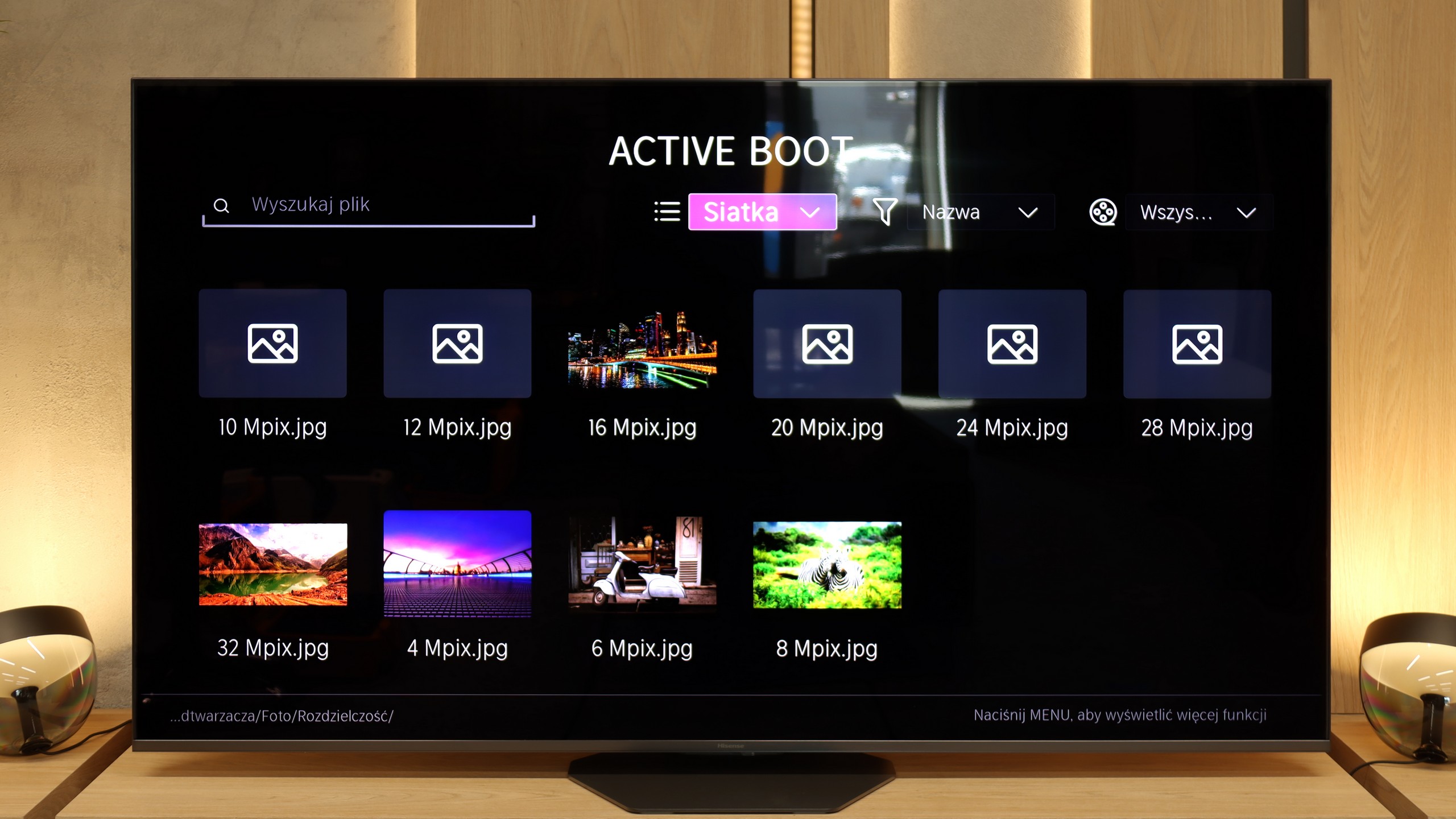

The built-in media player in the Hisense U8Q will be more than sufficient for most people. The television opens popular video and audio formats and also handles photos. However, there is a small caveat – not all photo resolutions are supported. Therefore, if we have photographs saved in a very high number of megapixels, they may simply not open. It is worth keeping this in mind to avoid unpleasant surprises during the family photo presentation.
The built-in media player in the QNED86A6A performs quite well with the most popular audio and video formats. During testing, we had no issues playing MP4, MKV, or MP3 files; everything played smoothly and without stutters. The television also handled most images, although we encountered a typical barrier for many manufacturers – lack of full support for the HEIC format from Apple. So if you use an iPhone daily and store photos in this standard, you will need to convert them beforehand or, better yet, transfer them using AirPlay. Other than that, it’s hard to find fault as, for a built-in solution, it's really decent.
Apps
7.7/10
9.1/10














































Sound
7.8/10
6/10
- Maximum volume88dB84dB
- Dolby Digital Plus 7.1
- Dolby True HD 7.1
- Dolby Atmos in Dolby Digital Plus (JOC)
- Dolby Atmos in Dolby True HD
- DTS:X in DTS-HD MA
- DTS-HD Master Audio
The Hisense U8Q performs really well in terms of sound. The sound quality is pleasant, with a slight bass and quite decent mid-tones, making it entirely sufficient for everyday viewing of films, series, or gaming.
It gets a bit worse when we crank the volume up to 100%. This is rather a rare scenario, but it’s worth mentioning. With very strong bass, the rear speakers start to work so intensely that the television can slightly 'shudder', and the sound transitions into an unpleasant, plastic echo. Therefore, it’s best to stay within the range of 70–80% volume – at that level, the U8Q sounds clear and pleasant, without any unwanted effects.
In terms of sound quality, the QNED86A6A performs quite decently, but there's no denying that it isn't at a level that would impress home cinema enthusiasts. The sound is clear and distinct, with dialogues easy to hear, but overall it sounds rather flat and definitely lacks solid low tones. For everyday television viewing, streaming services, or news, this level is acceptable; however, if you plan to watch movies or play games more often, even a basic soundbar will make a significant difference.
Acoustic Measurements
88dBC (Max)
75dBC
84dBC (Max)
75dBC


